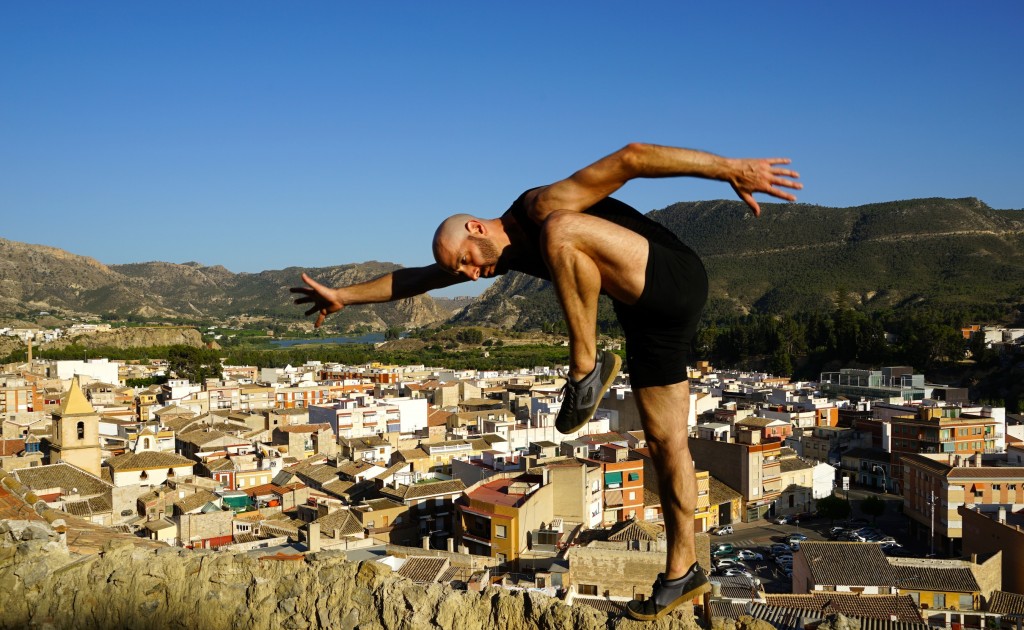European Travelogue: Summer 2016
June 5, Sunday
On May 31 I flew from New York to Paris, and then, after waiting for half a day due to the strike (la grève) in the Gare, trained south to Avignon to begin the residency at Maison Dora Maar. This first photo (the only one I did not take) shows the view from the garden toward the side of the house (there isn’t a back of the house because it is built into the rock). The two shuttered windows on the right belong to the studio I’m using! The windows down and to the left to ma chambre!

Today is the fourth day waking up in intoxicating Provence. Une baguette et chèvre bought from one of two boulangeries in the village. Nothing like local fresh cheese on real French bread!
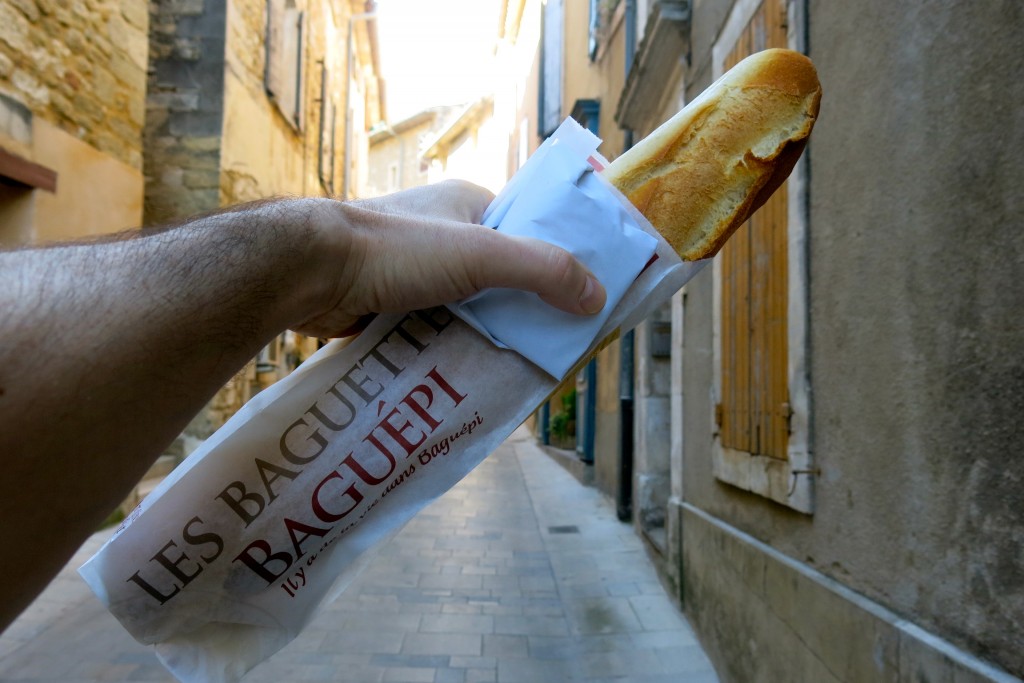 The walled village of Ménerbes, built on a hill and surrounded by the Luberon mountains (foothills of the Alps) is considered one of the most lovely in France. “Les plus beaux villages de France.” It’s actually trademarked. 153 of 32,000 villages have this designation!
The walled village of Ménerbes, built on a hill and surrounded by the Luberon mountains (foothills of the Alps) is considered one of the most lovely in France. “Les plus beaux villages de France.” It’s actually trademarked. 153 of 32,000 villages have this designation!  It’s not difficult to see why! An incredible quilt of green stretches out all around the village; the valley’s patches of olive trees, grapes, and farms—punctuated by overflowing and aromatic jasmine, lavender, white and pink roses, small crimson poppies and, currently in season and ripe for the picking, cherries.
It’s not difficult to see why! An incredible quilt of green stretches out all around the village; the valley’s patches of olive trees, grapes, and farms—punctuated by overflowing and aromatic jasmine, lavender, white and pink roses, small crimson poppies and, currently in season and ripe for the picking, cherries.
There are two also two writers in residence at the Maison’s historic building, perched atop the village with breathtaking views. One can gorge on its beauty. The views magnificent. The scenery idyllic. The bedroom’s vista extends to the mountains. This is a shot of the gorgeous facade of the house.
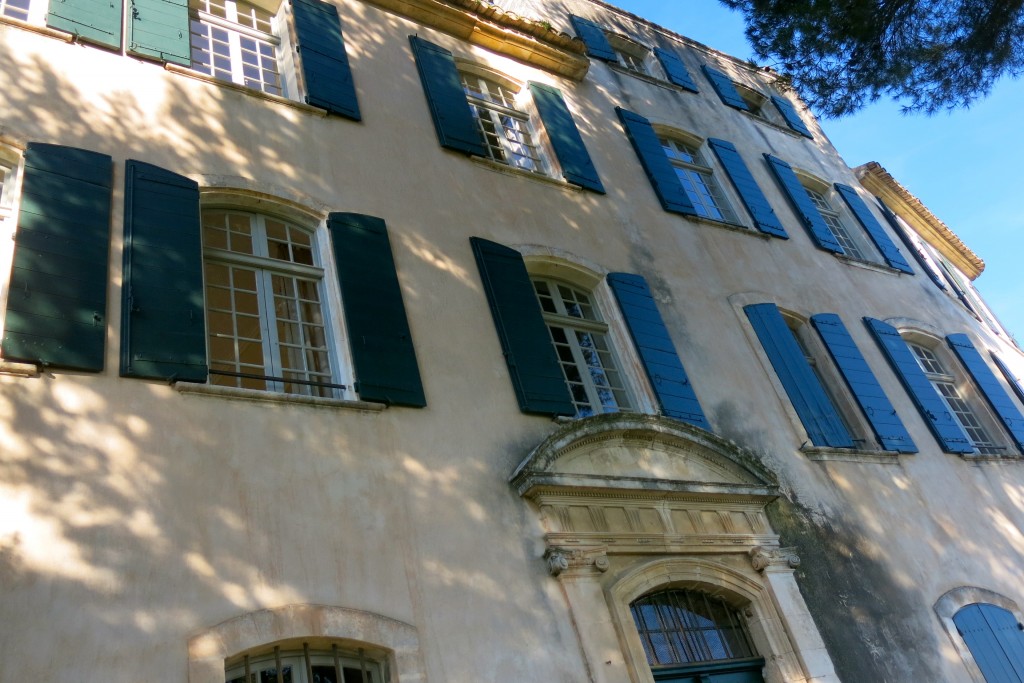
The past two days were devoted to celebrating Dora Maar, the photographer and painter. She was already famous within the Surrealist art movement before she met Picasso; she became more famous after they became a pair. Her reputation has mostly lived on for having had this significant amorous relationship and for being a muse to Picasso. Indeed she was. 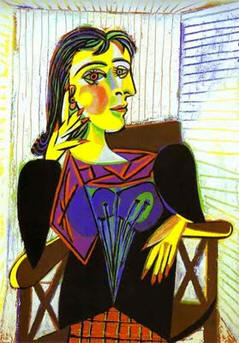
 He sketched, drew and painted her incessantly during the mid 30s and early 40s. However she was an important and original artist very much in her own right. The black and white photographs here are among the most well-known of Dora’s.
He sketched, drew and painted her incessantly during the mid 30s and early 40s. However she was an important and original artist very much in her own right. The black and white photographs here are among the most well-known of Dora’s.
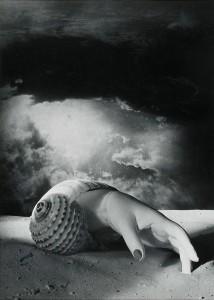
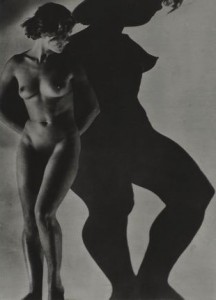
To celebrate the 10th anniversary of the presence of the The Brown Foundation, which runs the residency, there is an exhibition of Dora’s work at the Maison de la Truffe et du Vin (The House of Truffles and Wine), around the corner from the Maison. The opening was a grand success. Later in the evening, on Friday, a screening of a film fictionalizing Dora and Picasso’s life together: La Femme Qui Pleure Au Chapeau Rouge. Yesterday the house was open all day for everyone and it was constantly full of people (except for the floors where we are living).
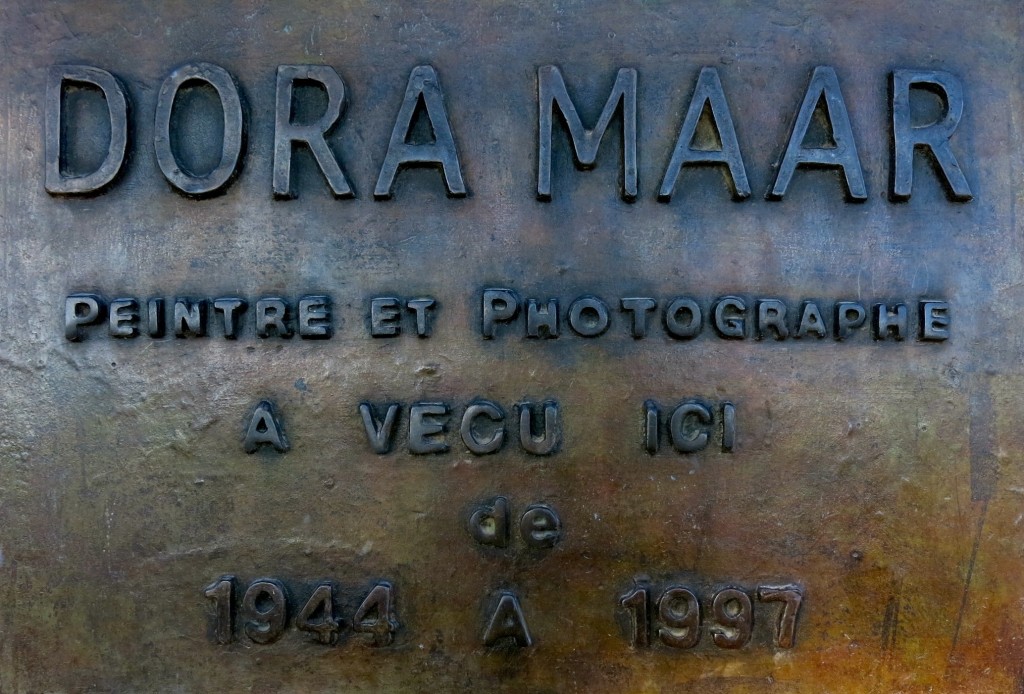
On the ground level there are two galleries of photographs, some of Dora’s and some documenting what the house looked like before it was renovated after her death. Picasso obtained this house for Dora, who lived here and in Paris her whole life. He didn’t exactly purchase it. Rather, the story, as told by art historian/writer and Dora Maar expert Victoria Combalia (here from Barcelona to give a lecture), is that Picasso was approached by someone who offered the house in exchange for a painting. Now that’s quite the trade! With Victoria after lunch in the garden between events.
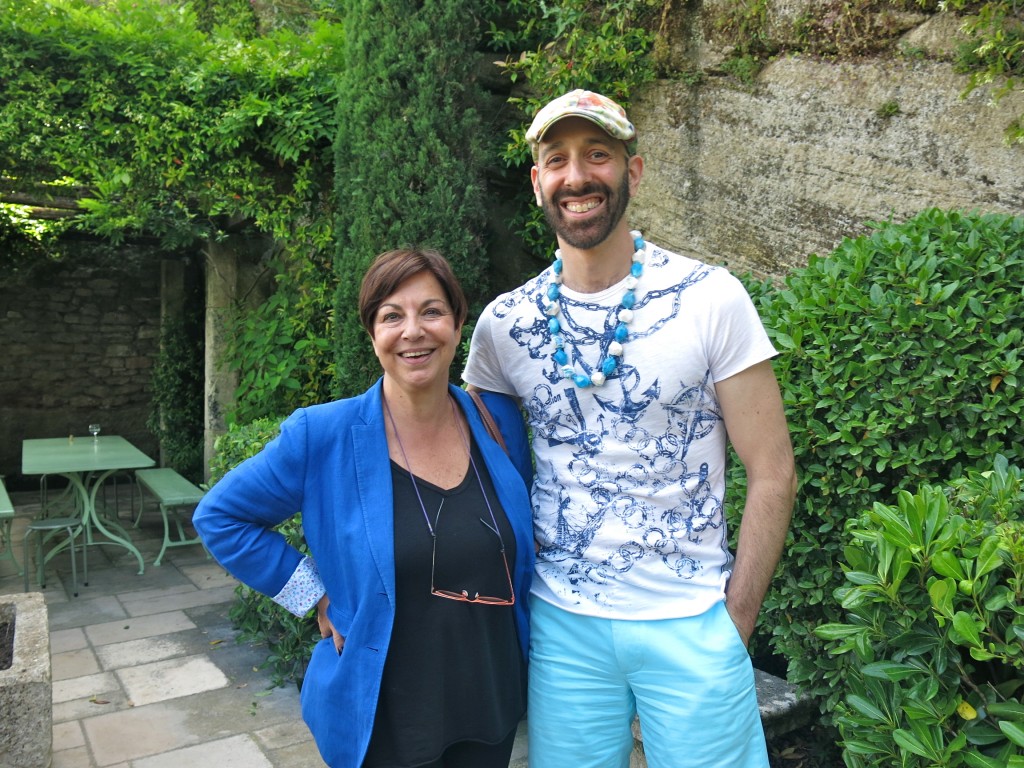
Another film, this a documentary, was in the afternoon, followed by a reading by an actress who arrived from Paris to deliver some of Dora’s poems. At 5pm the Mayor (Maire) of Ménerbes unveiled a plaque commemorating the passageway right next to the house as Passage Dora Maar.
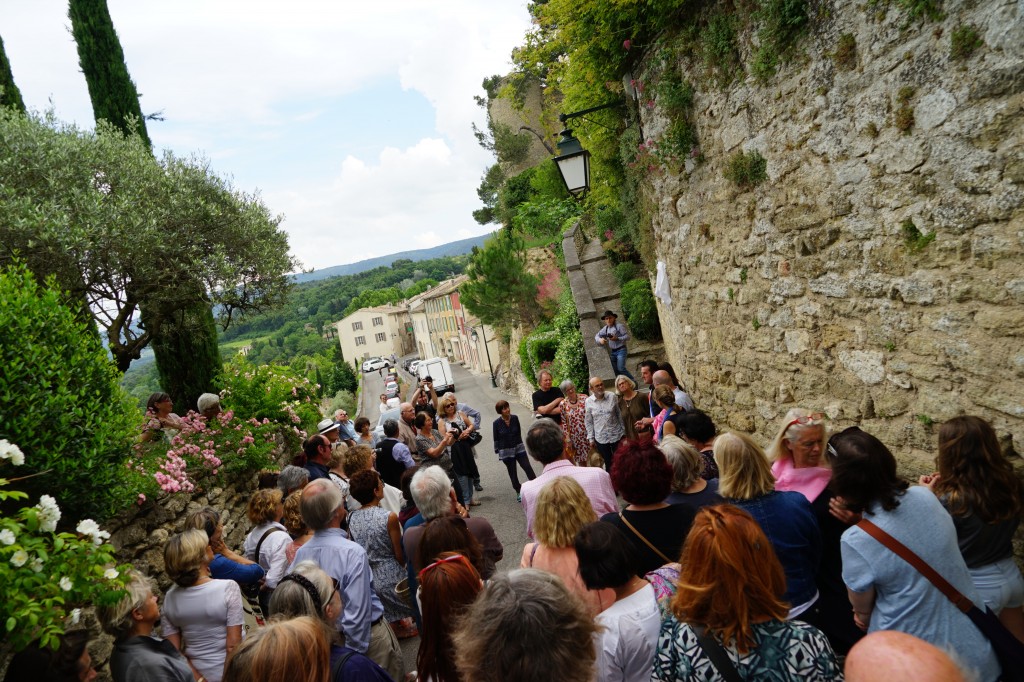
Then a lovely wine and hors d’oeuvres reception in the garden of the property, open to everyone in the village. Many from the community came (about 1000 live in Ménerbes year-round).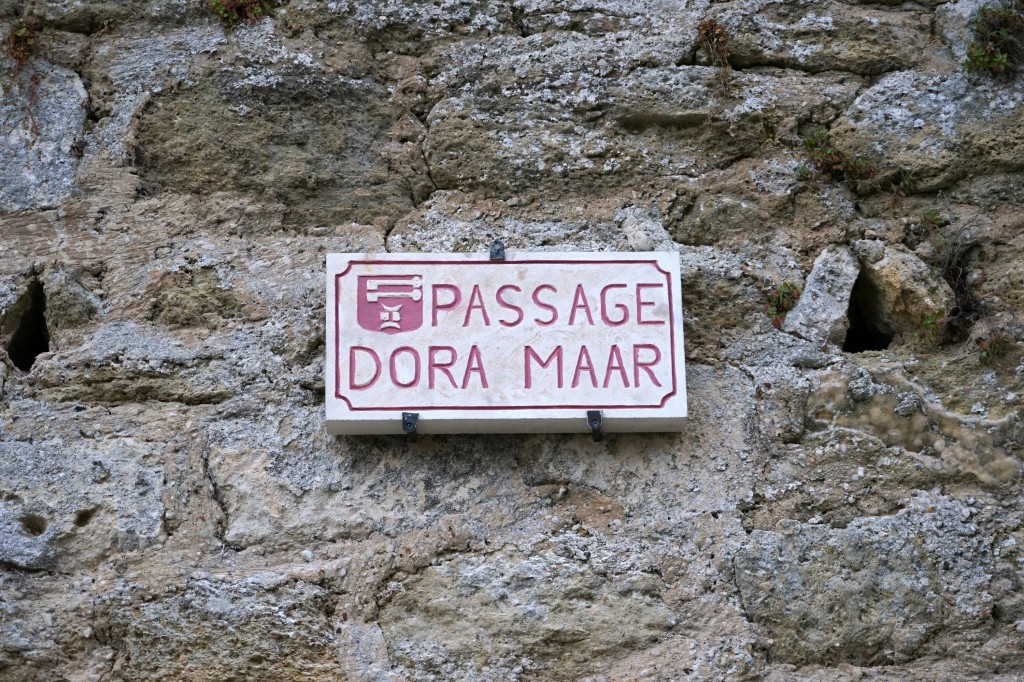 The days will pass quickly here, as days do everywhere. However, there is a different sense of time; it is fluid. A gift to be released from the regular schedule of teaching and rehearsing. Am researching the région: walking, exploring, reading, meeting people in the community. The list grows of villages and towns to visit. Ideas are forming…Wandering and photographing. Following the light.
The days will pass quickly here, as days do everywhere. However, there is a different sense of time; it is fluid. A gift to be released from the regular schedule of teaching and rehearsing. Am researching the région: walking, exploring, reading, meeting people in the community. The list grows of villages and towns to visit. Ideas are forming…Wandering and photographing. Following the light.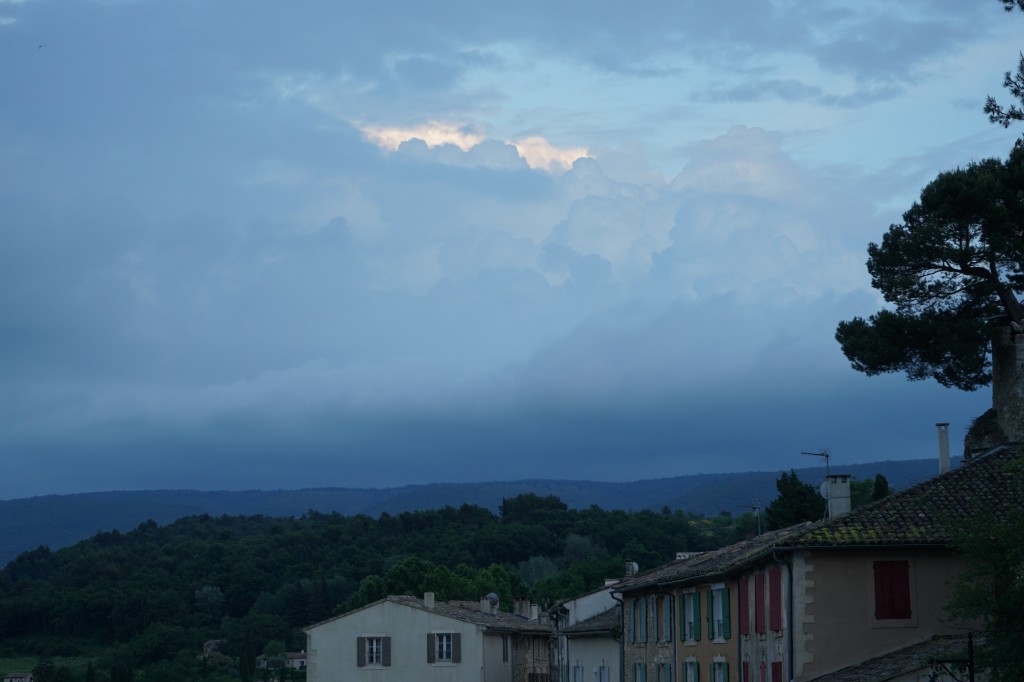
I’m also keeping my body in form, giving class on the terrace overlooking the garden! A scenic path circling around the village is a picturesque and tranquil place to walk. This morning, 7:30, I did a loop (around 40 minutes), stopping to gather a bowl of cherries (for isn’t that what Life is?). The path starts in the center of the village, winds around through olives groves and through a brief forest. 
The Maison holds monthly salons, the next June 25, when we will present our work. Will I dance, show a film, or both? Le temps nous le dira. Time will tell. This image is from a self-photo shoot on the terrace. Yes, I shot it! The residency has just begun but it’s never too soon to jump for joy!

Sunday, June 19
The residency here is more than half over. 11 days await. From morning through the late nightfall, each day cultivates creativity, imagination, exploration and work. This is the artist’s life. The beauty of being in beauty is that everything looks good, all the time, even on the rare semi-overcast days. 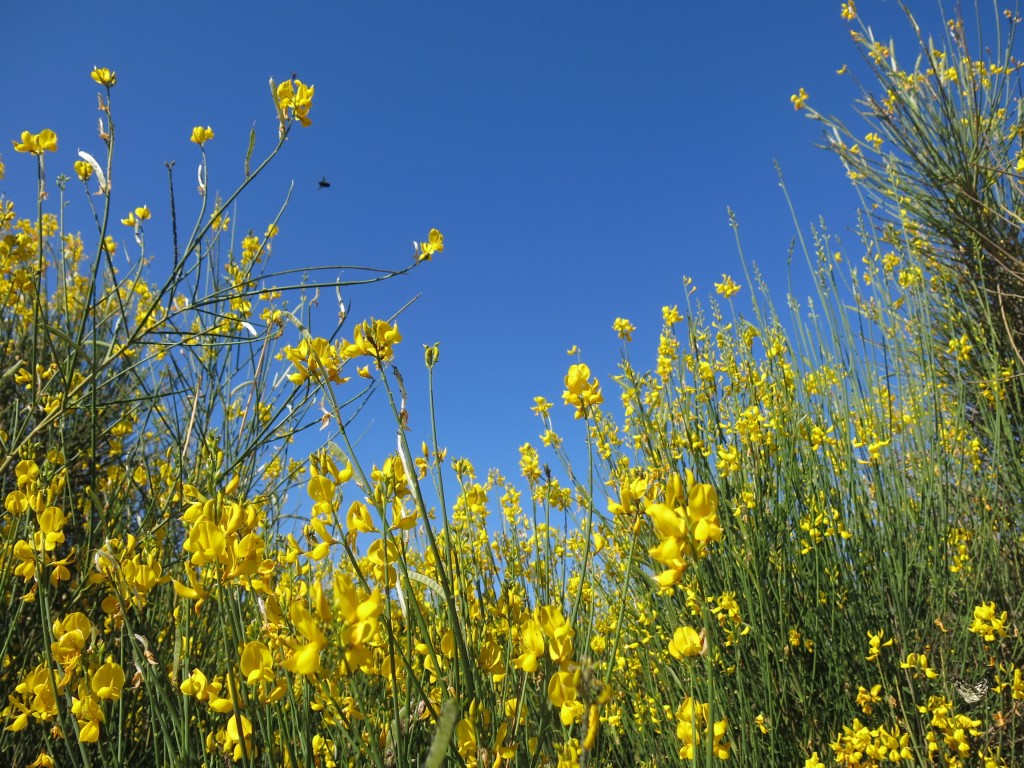 To be in this region, village, and specific locale where great artists have labored: Picasso, Cézanne, Van Gogh. The clouds could inspire endless impressions. Below, the bike path connects villages.
To be in this region, village, and specific locale where great artists have labored: Picasso, Cézanne, Van Gogh. The clouds could inspire endless impressions. Below, the bike path connects villages.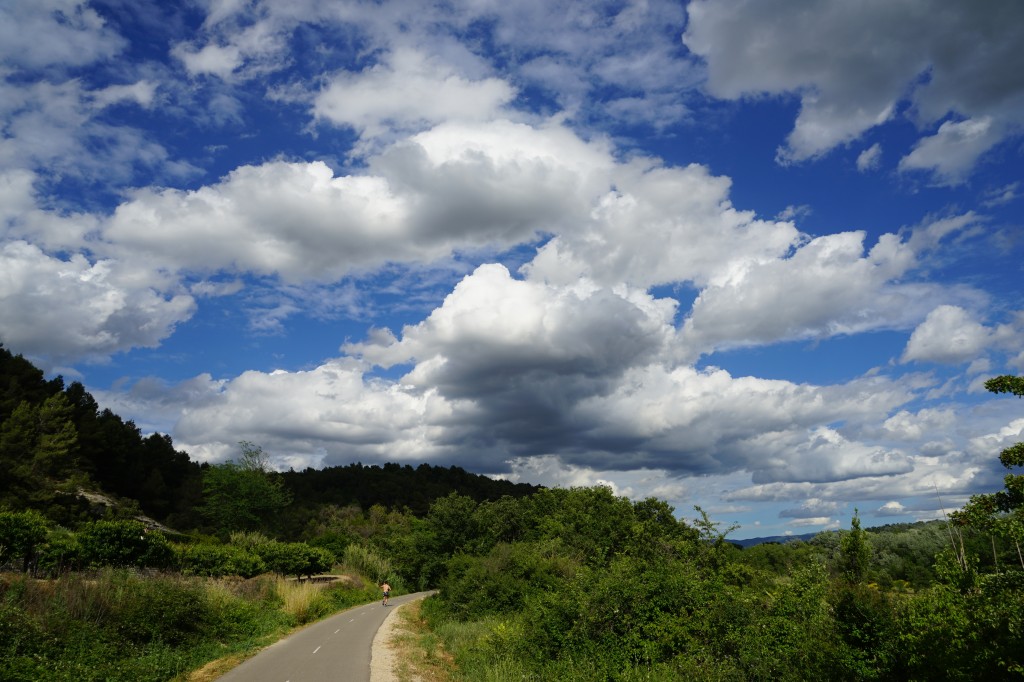
One doesn’t become inured to a view, as one doesn’t to greatness of any kind. As a superb painting is something one doesn’t tire of seeing, so the view, with its endless permutations and variations. All based on the gorgeous light that filters through clouds or hits without obstruction. 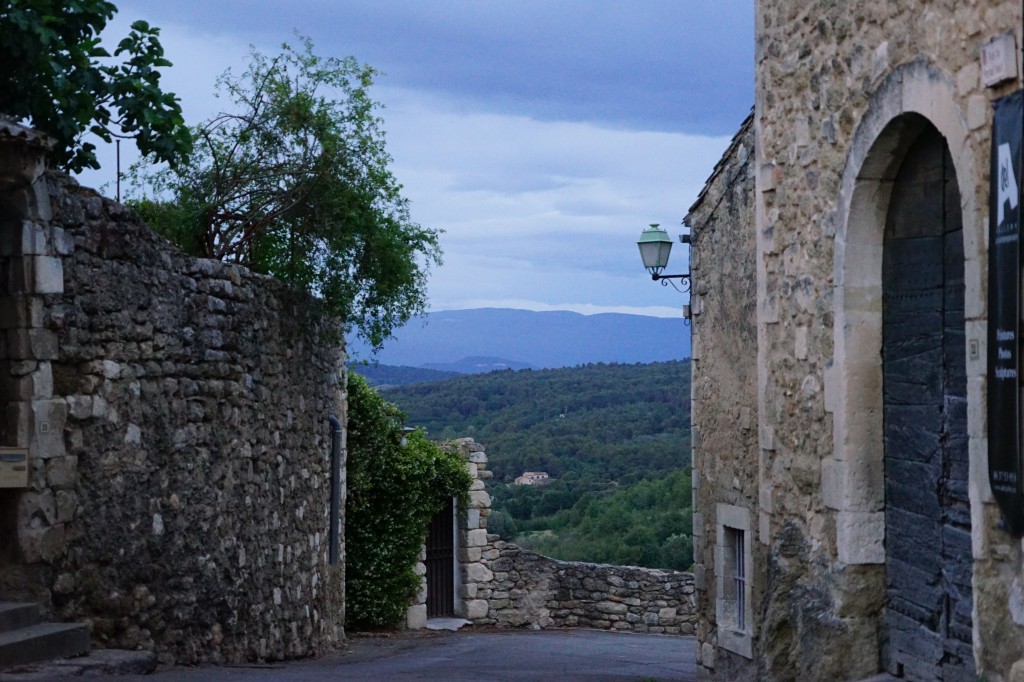
We visited the nearby Sénanque Abbey, outside the village of Gordes. Founded in 1148 by Cistercian monks who live here, there are now less than ten, and grow lavender to make a living. We went specifically to hear the Vespers, gorgeous, sung nightly. The interior is devoid of icons, a pure space. 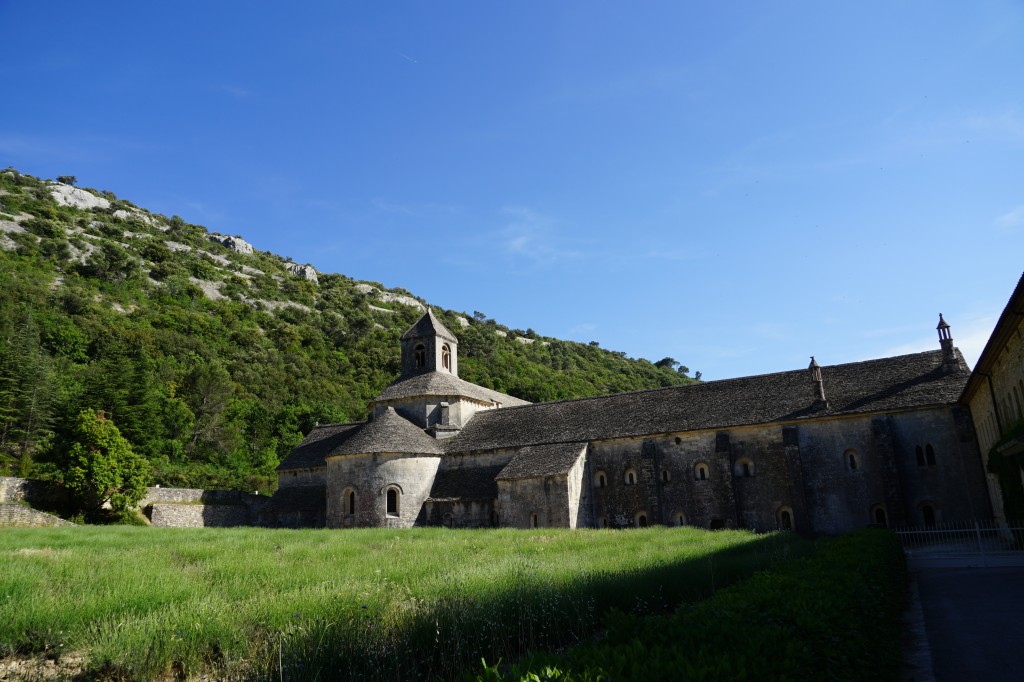
This church in Oppède-le-Vieux, a village high in the mountains, also dates back to the 12th Century. By the 20th it had become a ghost town, part of the appeal for visitors today. 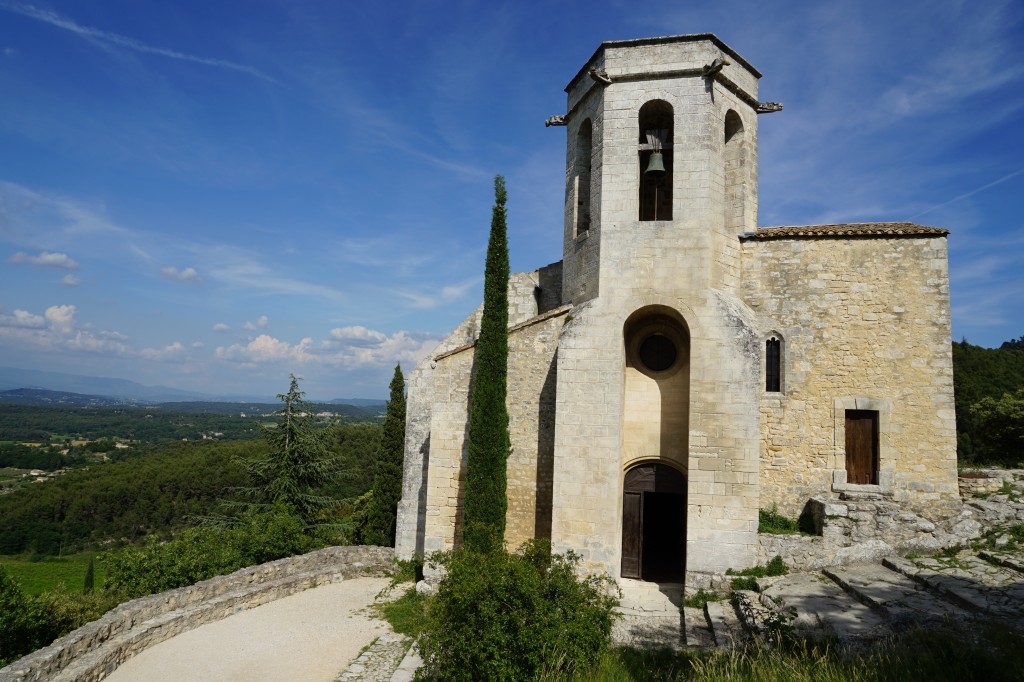 Mixed among the ruins are some homeowners, in what is an enchanting village built against the Luberon range. I biked here, a snake at my feet just as I started out. The hills here are not for the faint at heart. I walked the final ascent. The descent allowed me to coast for 15 minutes.
Mixed among the ruins are some homeowners, in what is an enchanting village built against the Luberon range. I biked here, a snake at my feet just as I started out. The hills here are not for the faint at heart. I walked the final ascent. The descent allowed me to coast for 15 minutes.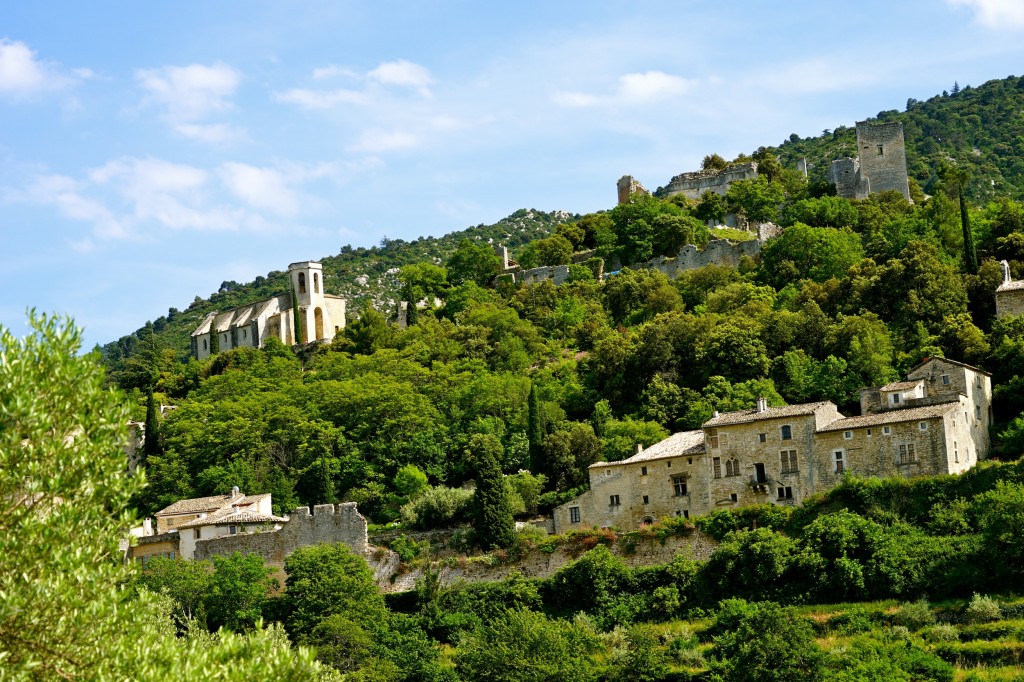 Spent six hours here, leaving at 9pm, walking through the village and taking hundreds of photos. The one of me jumping was from a little garden area on top of a mound. Below, back at the Maison.
Spent six hours here, leaving at 9pm, walking through the village and taking hundreds of photos. The one of me jumping was from a little garden area on top of a mound. Below, back at the Maison.
For the past few weeks I have been working with a class of 8-year olds at the village’s school. There are four teachers for all of the students. On June 21st, the solstice, the village, as everywhere in France and most places in the world, celebrates Fête de la Musique. The first festival was in France 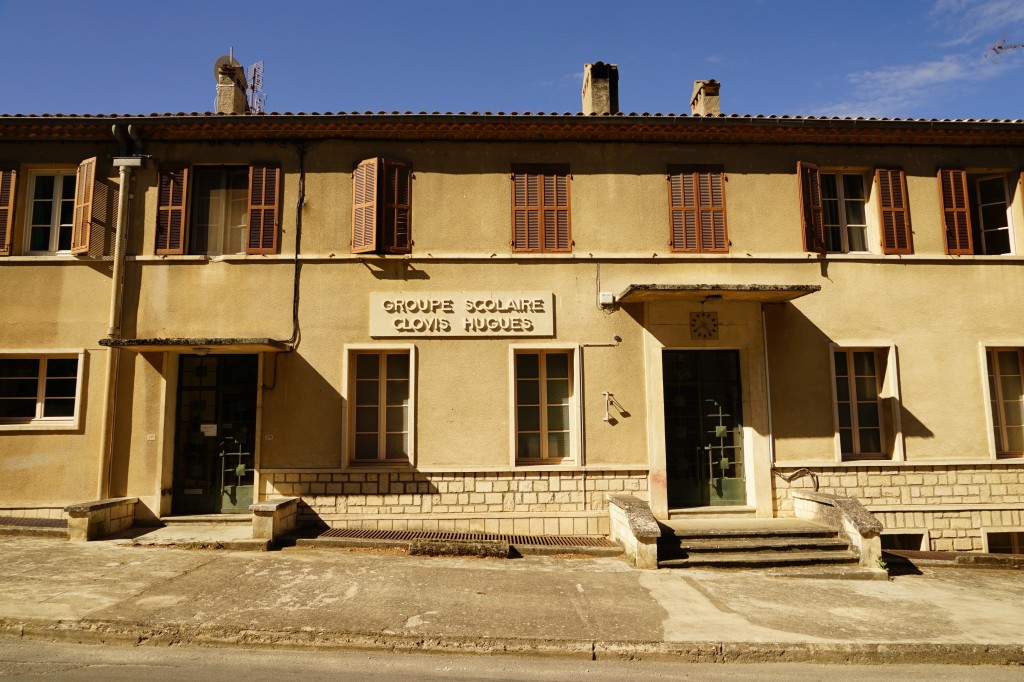 in 1982 and has since become celebrated in 120 countries. The students will perform a dance I have choreographed for them to Count Basie. The purpose of the event is to make music accessible.
in 1982 and has since become celebrated in 120 countries. The students will perform a dance I have choreographed for them to Count Basie. The purpose of the event is to make music accessible. 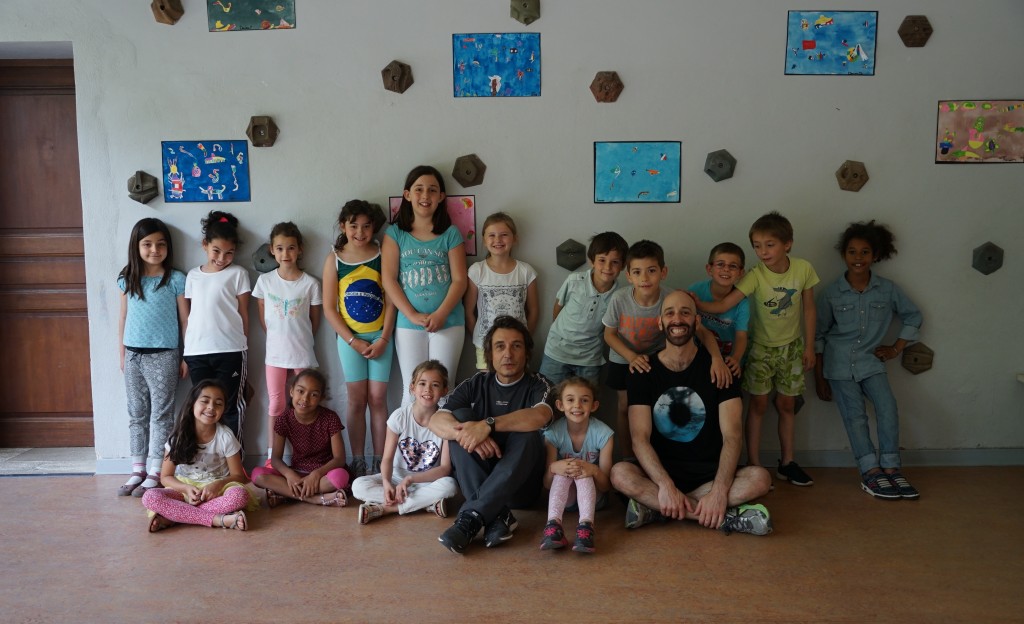 Two of the caveats to being sanctioned by the official Fête de la Musique organization are that all concerts must be free, and all performers donate their time for free. Am abiding by the rules! Is wonderful to go to the school daily in the morning, a few minutes walk away. The kids are great!
Two of the caveats to being sanctioned by the official Fête de la Musique organization are that all concerts must be free, and all performers donate their time for free. Am abiding by the rules! Is wonderful to go to the school daily in the morning, a few minutes walk away. The kids are great!
Yesterday, at sunset, this large rainbow appears. Sunset photos can be disappointing. Hard to capture. You’ve seen one, you’ve seen them all. Well, this fiery one captured my attention.  There are two bell towers and the bells ring every hour, with one bell at the half-hour. But they’re slightly off. So after one bell has finished, the other rings a minute after the first!
There are two bell towers and the bells ring every hour, with one bell at the half-hour. But they’re slightly off. So after one bell has finished, the other rings a minute after the first!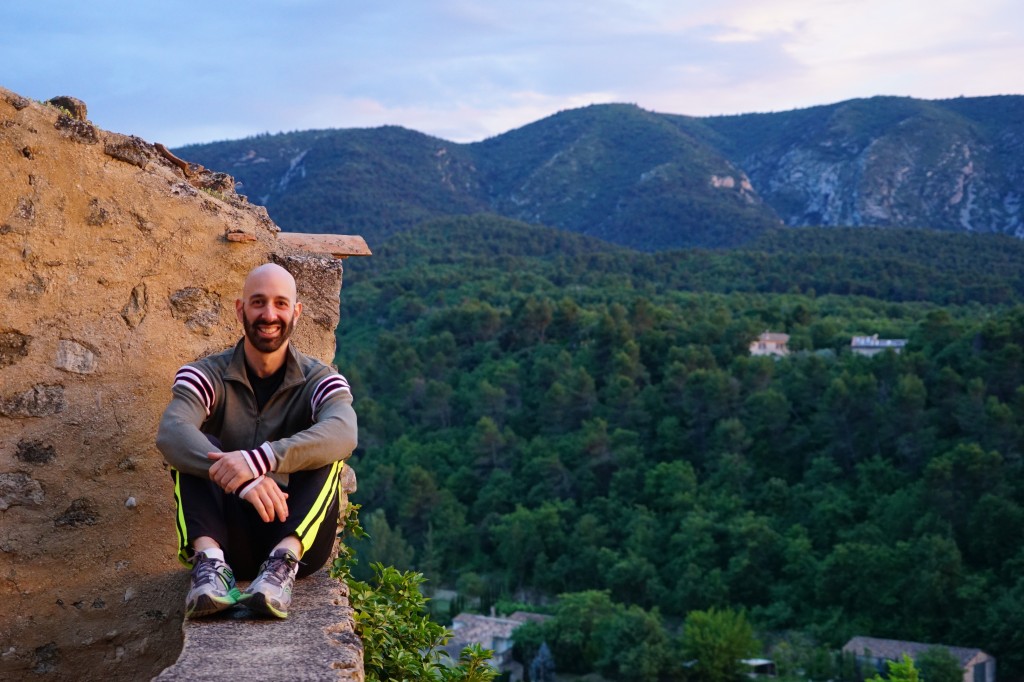 Sunset with the Luberon. The Salon at the Maison is on Saturday. I will show some of the new film work and dance a new piece in the garden. At the end of the month a performance in a very unique gallery space here in the village thanks to the invitation of the owner. Everyone in the village is extremely welcoming and interested. I am trying to bring as much dance to Ménerbes as possible!
Sunset with the Luberon. The Salon at the Maison is on Saturday. I will show some of the new film work and dance a new piece in the garden. At the end of the month a performance in a very unique gallery space here in the village thanks to the invitation of the owner. Everyone in the village is extremely welcoming and interested. I am trying to bring as much dance to Ménerbes as possible! 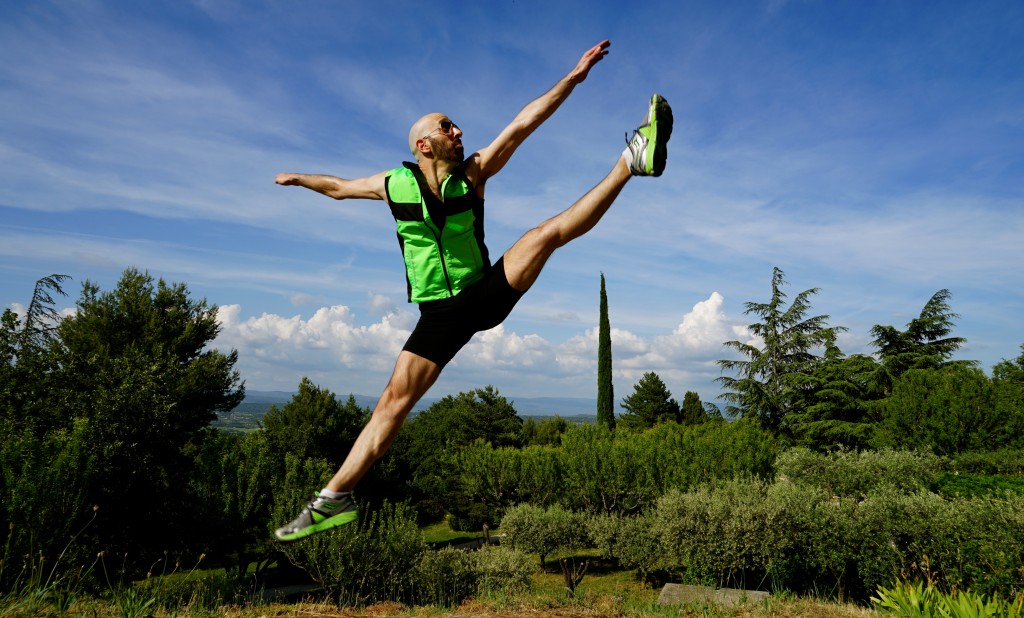
Thursday June 30–A Month in Provence!
Leaving France. The taxi came at 7:30 for Avignon. Not too early at this time of year, when the sun has already risen and breaks through the morning clouds. Gerard Auzet, the baker next door, was there to see us off. He wrote Confessions of a French Baker with Peter Mayle. Remarkable croissants! Traveled with fellow Fellow Khaled Alkhamissi, an Egyptian writer, en route to Cairo.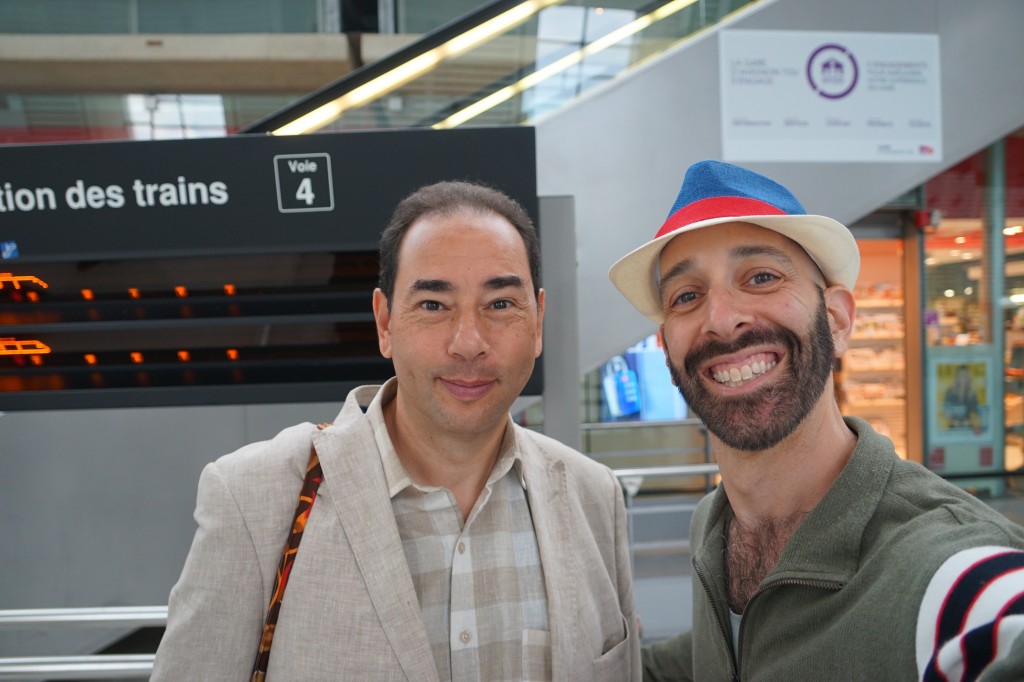
With American writer Rebecca Chase, a New Yorker who lives in Brooklyn, the three of us ate here our last night for a final meal together, a bookend to the residency as we had eaten roquefort quiches here the night I arrived. So much happened from this point in time. I had a wonderful month to live in the incredible house belonging to Dora Maar. It is important to clarify something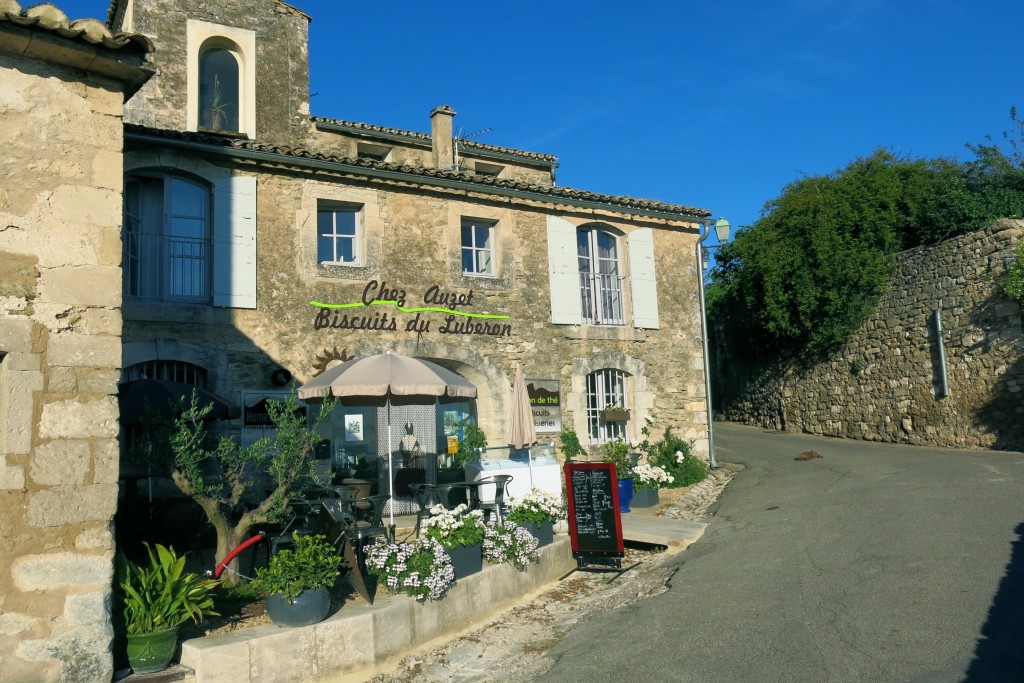
learned the last night while walking through the village with a Ménerbian friend: It is the same bell tower that issues both sets of rings. How funny to know! Had assumed the two sets of bells were from different sources! So at 10pm the bells ring ten times. A minute or two later it repeats. If one were to depend on the sound to awaken it’d be a reliable snooze. The sun awakens anyway (unless the house is shuttered) and most of the villagers are up early, as was I.
The last ten days have been stuffed, nonstop, and full of immense happiness. Saturday was a particularly memorable day. In the morning there was a vernissage (opening) of a photography show at the Mediatechque in Oppède, which is basically the bibliotechque, the library, evolving to match the times, incorporating all media into its collection. An amateur photo contest (concours) was advertised on a flyer, which I had seen early on when in the church at Oppède-le-Vieux. The theme of the contest was the quarry and its workers: literally, From the Brute Rock, the Cut Stone. This photo is one of three entered into the show, a collaboration with Yann Capapé-Masera.
The conception was to be integrated with these two statues of the men working. To make the comparison to the artist’s labor and to elevate the artist. From the rock, sculpture is chiseled. From the void, dance is produced. Yann, hired to assist during the residency, below with Rebecca, took the photograph. He was born and lives in the region. The well-attended opening (friends from the village came), despite the morning hour, was replete with wine (vin d’honneur) and a reception. The prix will go to the winner of the popular vote and hangs in the library until July 9.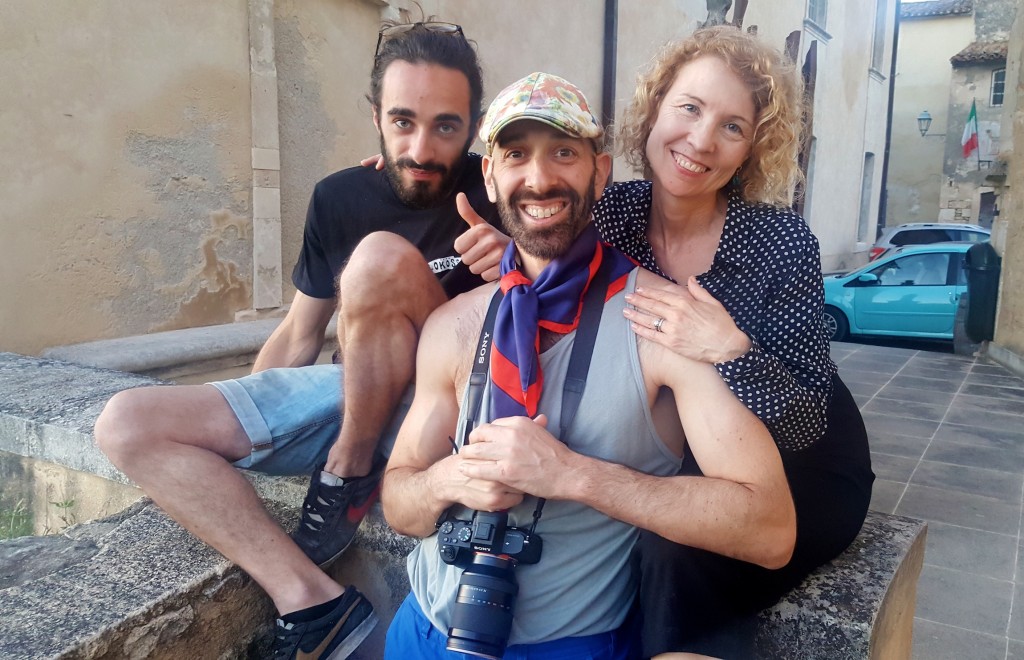
That evening, 6-7pm, was the Salon. As Khaled was in Germany, Rebecca and I shared the hour. She explained her research and read from a novel of hers. I had edited a brief video compilation of some of the different shoots here: work done in the house, in the garden, on the street, in surrounding locations. As everyone transitioned from house to garden I did too, emerging in costume on the terrace for a performance on the stairs. Everyone stood from below. Speakers provided strong sound. To Chopin, Schumann and a recording of an improvisation by the piano tuner, I danced three sections of new choreography, choreographed specifically for the setting.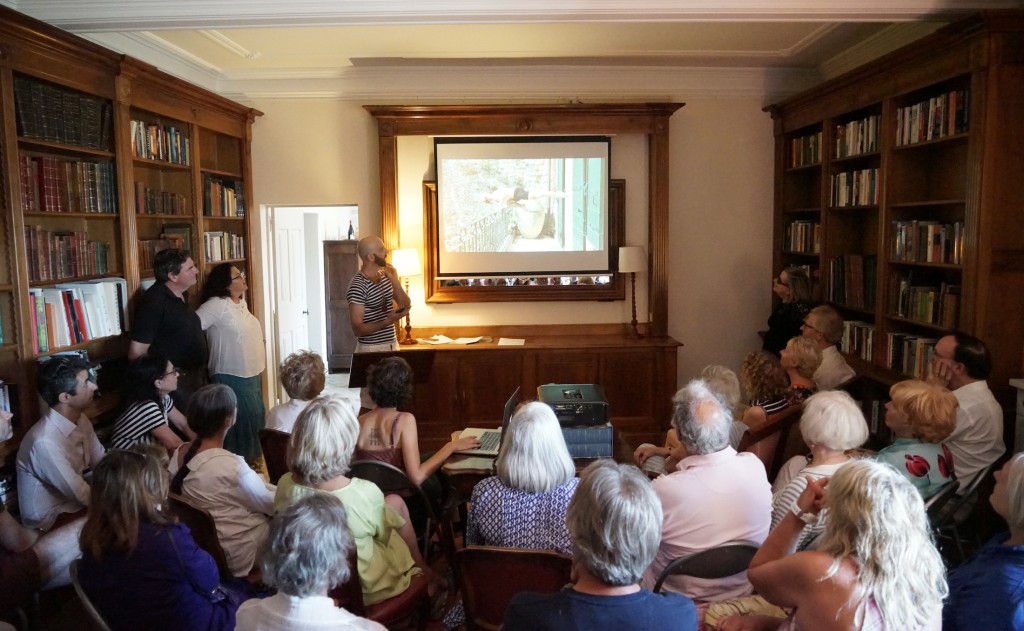
The first on the stairs descending, the second surrounded by all on the patio, the third on a series of four grindstones in another part of the garden. A magical day, as always thrilling to perform outside, amid the jasmine and the splendor of the environment, the soft, sweet air, the bonhomie of many supporters and lovers of art. After the performance with Gwen Strauss, the Director of the Maison Dora Maar, and Mireille Cartet, my French aunt!
Following the salon, that evening held a fabulous social highlight of the month: an annual party held on the property of Lord Davies and his wife. From the moment I arrived he said he expected me to dance a lot. My reputation preceded me; a friend said everyone was talking about the “eccentric” dancer from America (eccentric does not have the same negative connotation in French!) From the atelier’s high window, I had been watching the rental team set up the party for days. A series of tents overlooking the valley. The workers laboring in the heat, lugging couches and tables sans pause.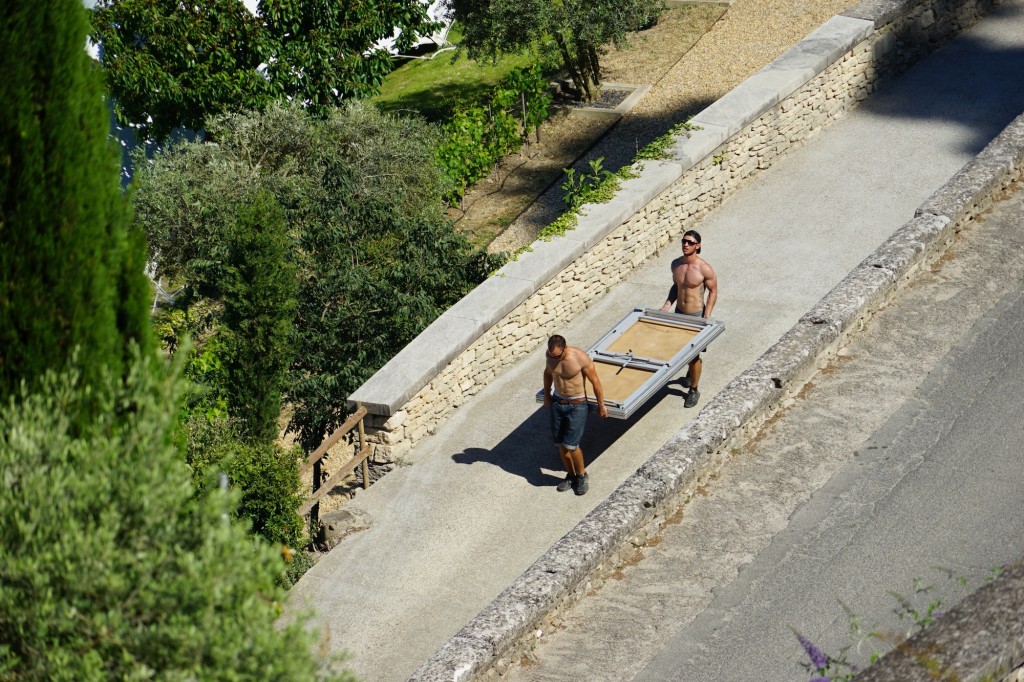
This seated dinner for 200–two extremely long tables with seating tennis court style–featured an enormous chandelier over the dance floor, a terrific band, and the requisite abundance of drink and food from start to finish. Once the band started Rebecca and I joined, not stopping to pause until the band broke for theirs, after midnight. When they restarted Lord Davies’s wife goaded me onto the floor to dance with Lord Davies, who then pushed everyone aside. It was then that my upended shirt revealed the leopard print tank underneath, earning me the nickname The Panther from the band.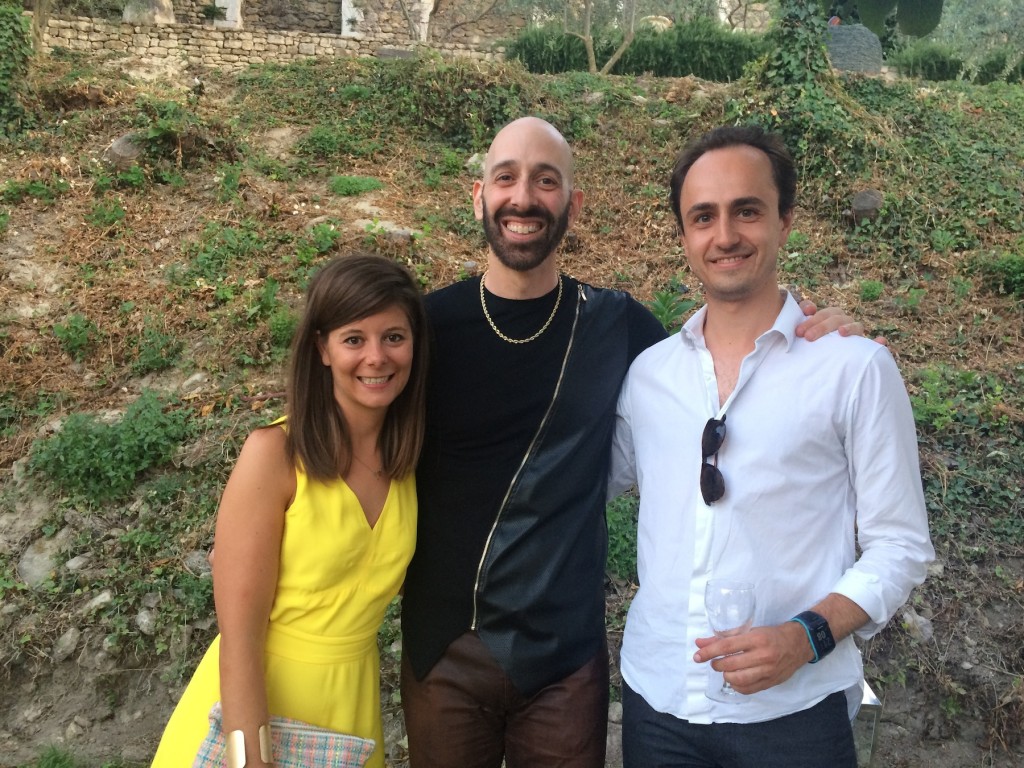
Dancing the night away indeed. Besides those in the village I knew, happenstance had an American family across the table. They had flown in from London for the party as others had from other countries. For some, an annual pilgrimage, a social event of Ménerbes’ season. Exhausted, elated, there was little time to sleep. The next morning I taught dance to Ménerbes and its neighbors! The Company’s Dance in the Gym program in France. Terrific turnout. Nothing like this has happened prior in the Salle des Fêtes (where movies are shown, the community center) or in Ménerbes. 
We learned some of the folk dances the Company loves to share, and of course finished with the best of them all, The Bus Stop. Everyone agreed, loving this cultural exchange. What a surprise to see an article in La Provence (online at Laprovence.com) the daily paper printed for all of Provence. The event was a collaboration between Mireille, the municipality, the Mayor and the Salle Polyvalent.
Tuesday, the 28th, Mireille presented me in her gallery. The small space, which is called A Place, One Work (Un Lieu, Une Oeuvre) is a gallery which features one artwork from one artist at a time, viewed from the street through a closed vitrine (it’s a door, one porte, with a large picture window). There were so many people that showed up in the street (Mireille had received permission to close the street, a necessary artery to move through the village) that I took the dance out into it, making a few improvisations along with the rep.
A reporter was there too. The street which houses some art galleries, and the boulangerie along with homes, was transformed into a site of dance. At different points, I interacted with a dog, the traffic of motorists, the light and shade, flowers hanging in a pot, mixing humor with the concentration of making something in the moment in front of a public, in close proximity. How terrific this all was! As was spending several meals, coffees and meetings in Mireille’s house and garden.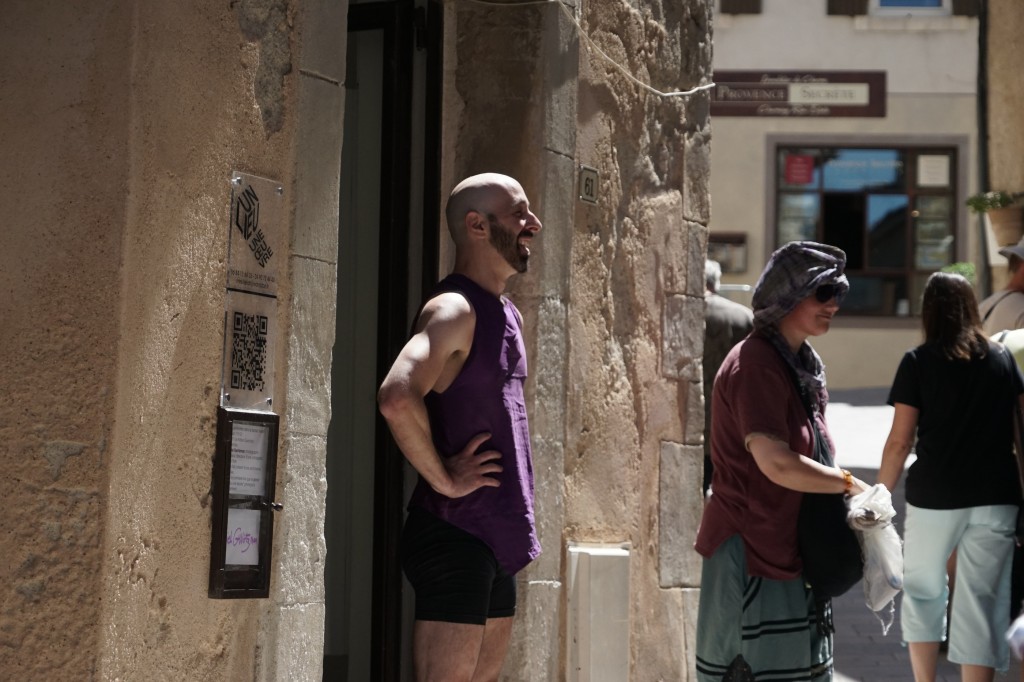
Another article came out on July 3 in La Provence! How wonderful to have this moment captured!
It was incredible how much was accomplished within a few weeks time and how known I became in the village. Posters, with photo, have been plastered all over the village promoting the events and word spreads quickly within a village. The joke has been that I know more people than the people who live here. The part of that which is true is simply that I left no opportunity unturned when faced with the possibility to begin a conversation. It was not possible to go anywhere and not meet someone. Everyone knows everyone, the life of a small village. There were invitations to soirees I did not have the time to attend. One highlight was an intimate dinner party at a friend’s. 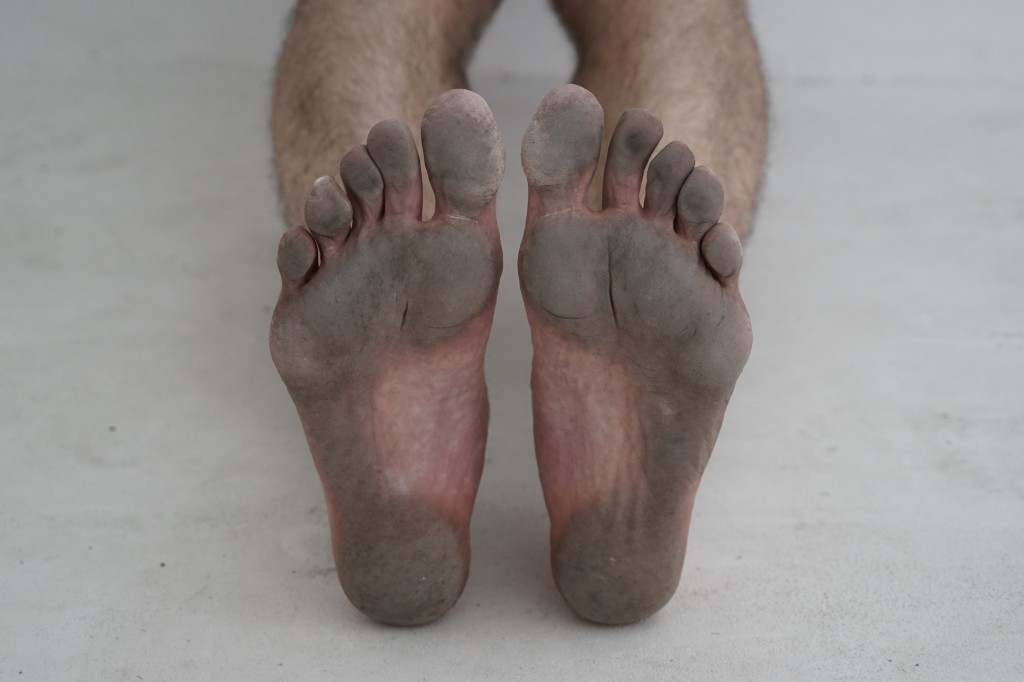
There were six guests, plus me and the pianist host who started the evening by playing Schumann’s Scenes from Childhood. That was followed by a magnum of champagne and dinner on the terrace overlooking the Luberon at sunset. The plat was brought by one of the guests, a 1-star Michelin chef. Eight individual ceramic bowls with lids, each containing lobster. The host made ratatouille. One of the other guests, a retired 2-star Michelin chef! And so it was: warm, charming, and full of laughter. Made sure to visit Rousillon, the famous Colorado of Provence, the ocher canyons. 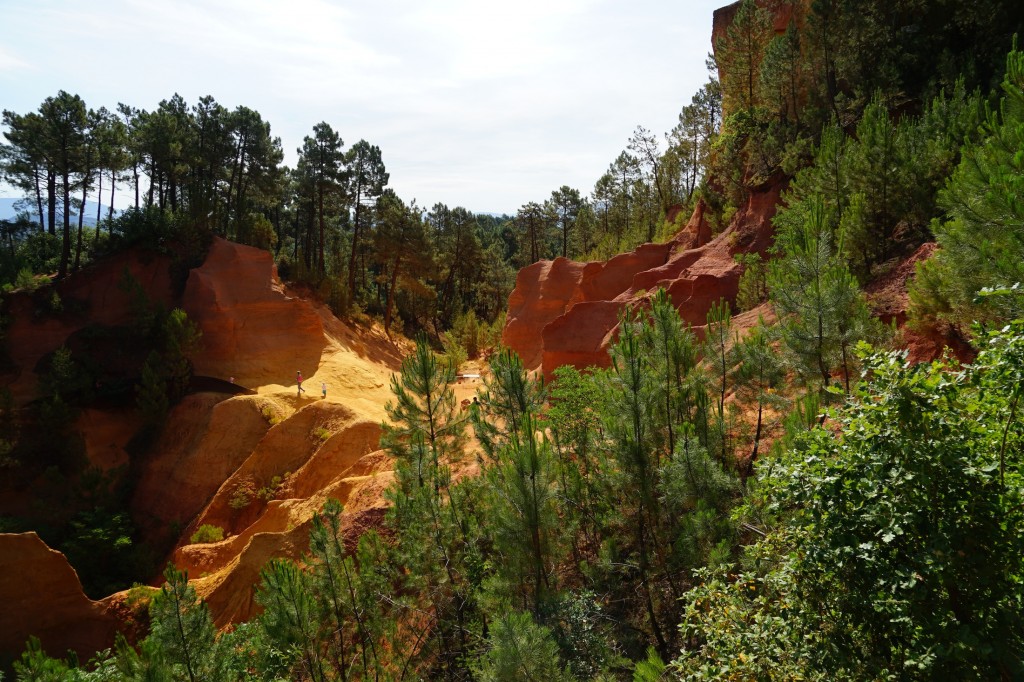
The performance for La Fête de la Musique the night of the solstice, in the square underneath the full moon. Two weeks and seven rehearsals later, a performance. These are a few of my adorable French students. For the first time there was dancing in the village along with the music.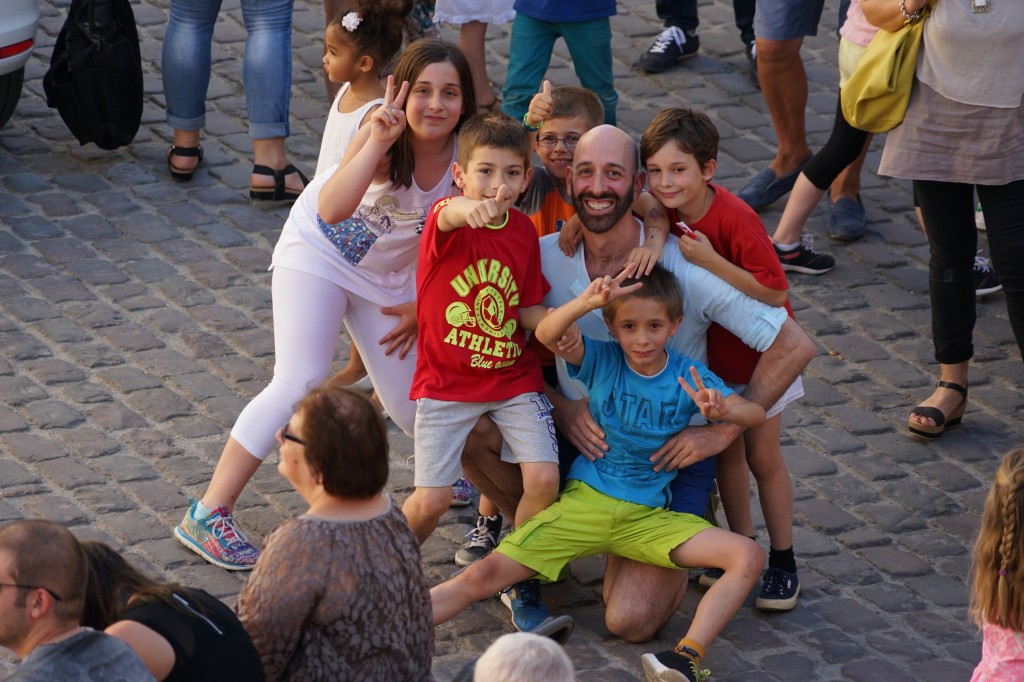
Visiting the school to say goodbye to the children. How attached I became and vice versa. The students drew pictures of their experience. Even their teacher drew this of me!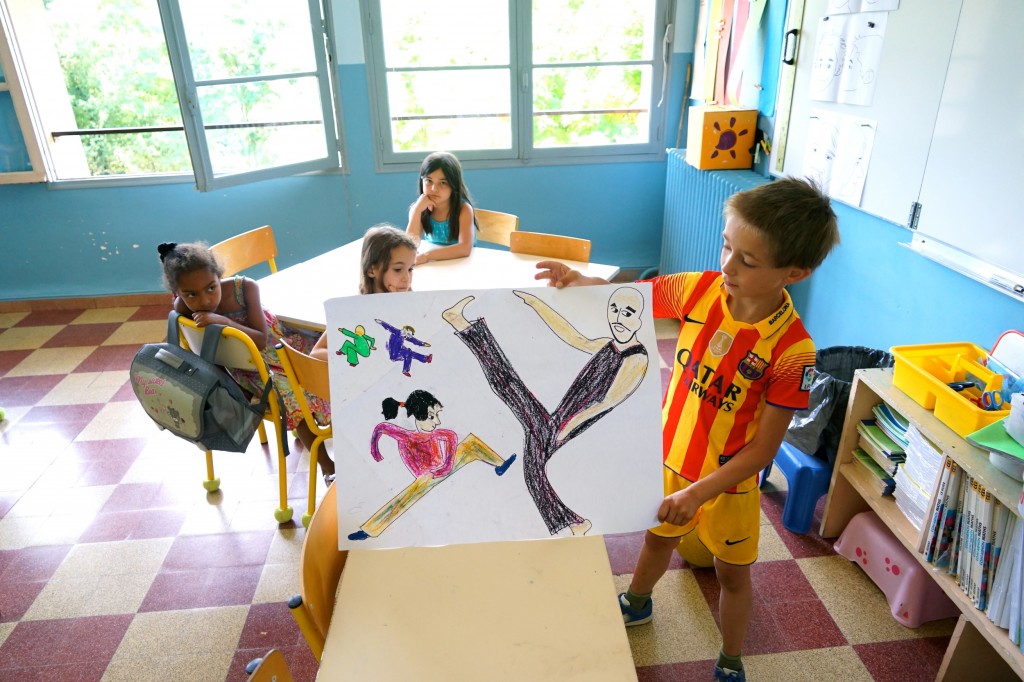
The month produced not only these several performance and teaching events, but several beautiful friendships, which I have no doubt will endure. To return to Ménerbes is not in question. When, the time will tell. There are friends, younger and older (8-85) I will dream of seeing again.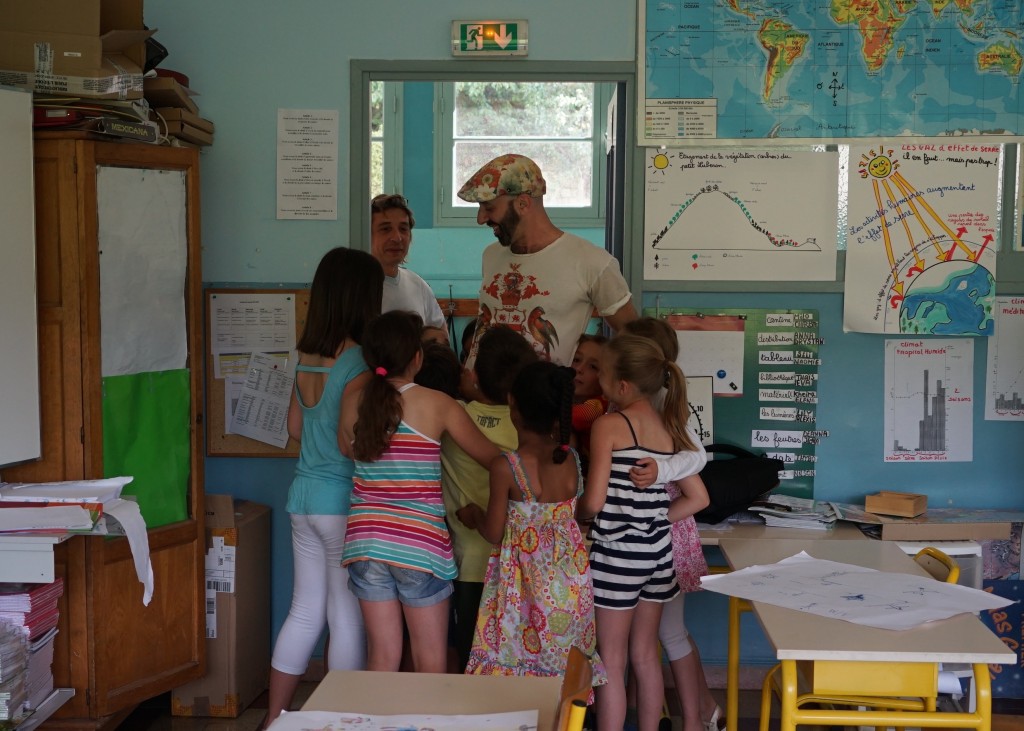 And so now, with hours and hours of video footage and thousands of photos I leave Provence for a new chapter and a new adventure in Spain. Thank you all for being on this journey with me. It means a lot to know you are reading and viewing the sights. Love from beautiful Europe!
And so now, with hours and hours of video footage and thousands of photos I leave Provence for a new chapter and a new adventure in Spain. Thank you all for being on this journey with me. It means a lot to know you are reading and viewing the sights. Love from beautiful Europe!
Thursday, July 14, Blanca
The change from France to Spain unapparent as I crossed the border on the train. The trip to Barcelona, delayed due to an accident in Marseille, demonstrated the art of service. Once we started moving again stuffed box lunches were distributed for the inconvenience! Amtrak take note!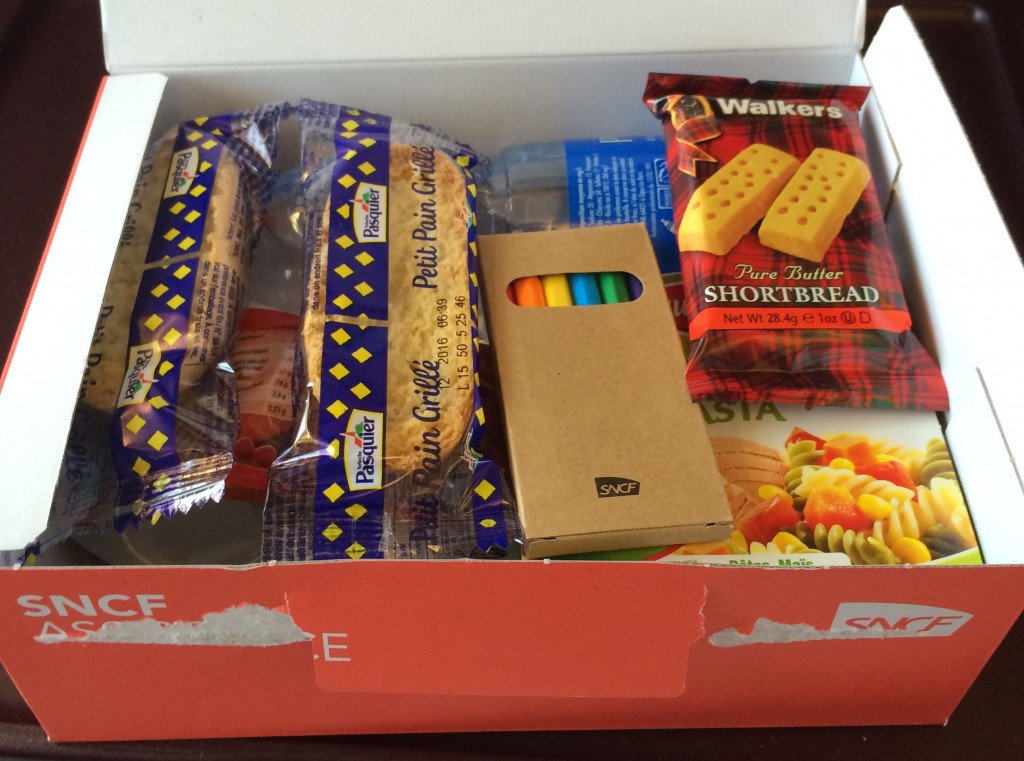
Barcelona highlights include the major attractions: the massive Sagrada Familia with its colorful light and sensation of scale. Nothing prepares for the jolt upon entering this gigantic space.
Gaudi Park, from where this close up of the Sea was taken. And also more quotidian ones: walking through neighborhood streets at night, the find of a terrific local pizzeria tucked-away on a non-touristic corner, and a striking evening view from the hotel! 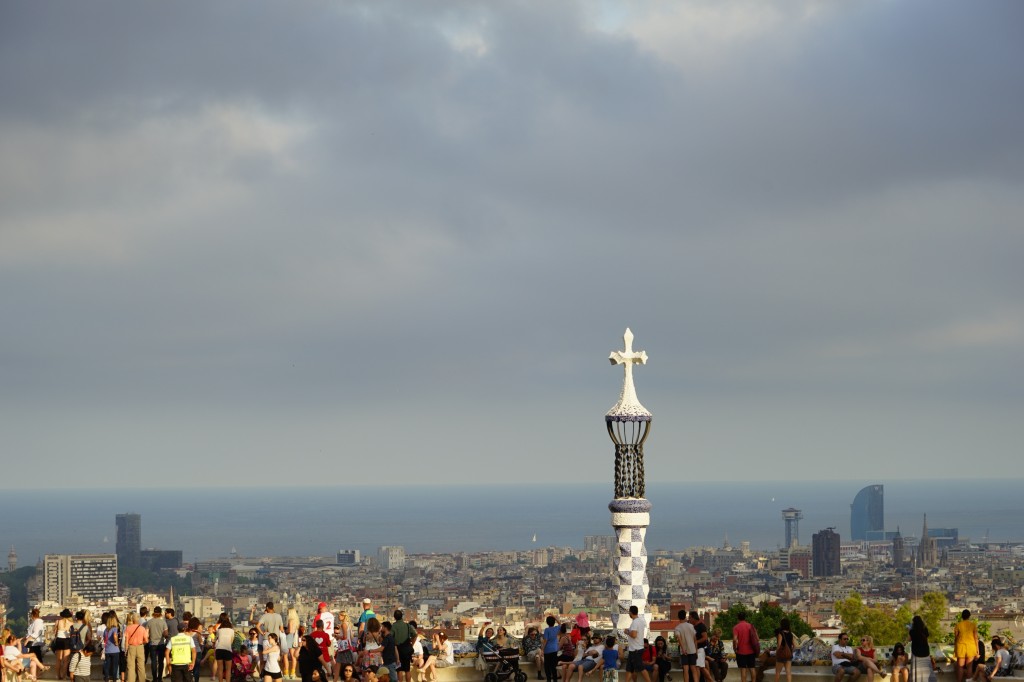
This was the cherry on top of an already received cherry: a free upgrade to a top floor suite, complete with private terrace and hot tub! To get to the residency: a seven-hour train (longer with more delays) to the region of Murcia, a taxi, a bus (over an hour). I arrived before nightfall.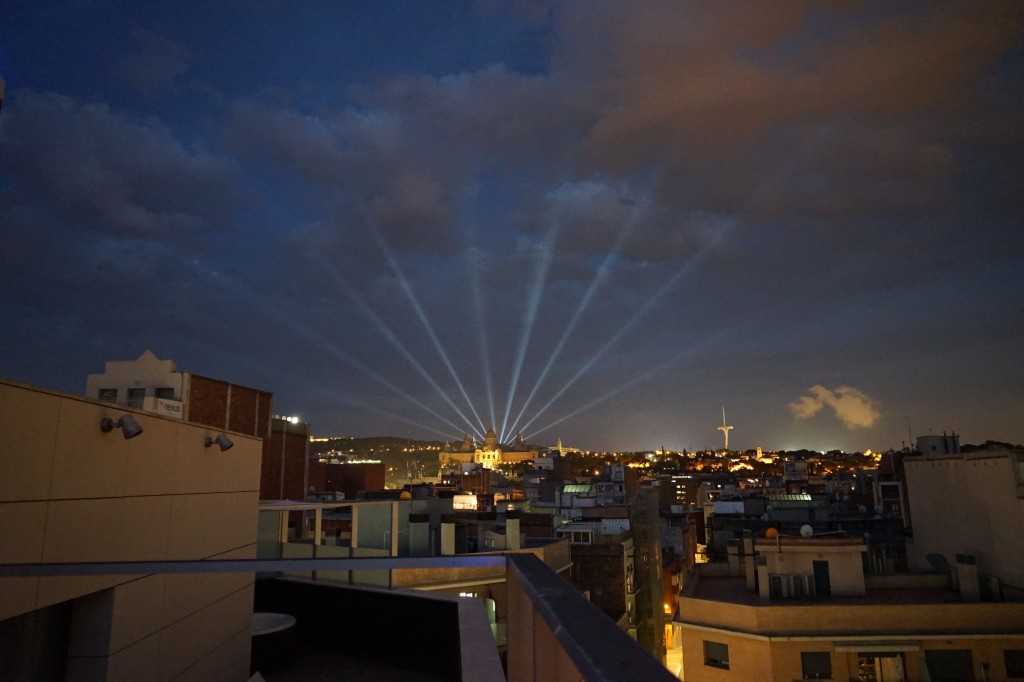
Into what landscape have I found myself? As the bus from Murcia (also the name of the largest city in the region) wound south, the terrain changes dramatically, from city to desert. Lush desert. I’m living in the village of Blanca, one of six municipalities that make up the Valle (Valley) de Ricote. 
The average altitude is 233 meters (760 feet) above sea level. The village has around 6500 people. The rocky mountains encircle the village, built right into the rock. 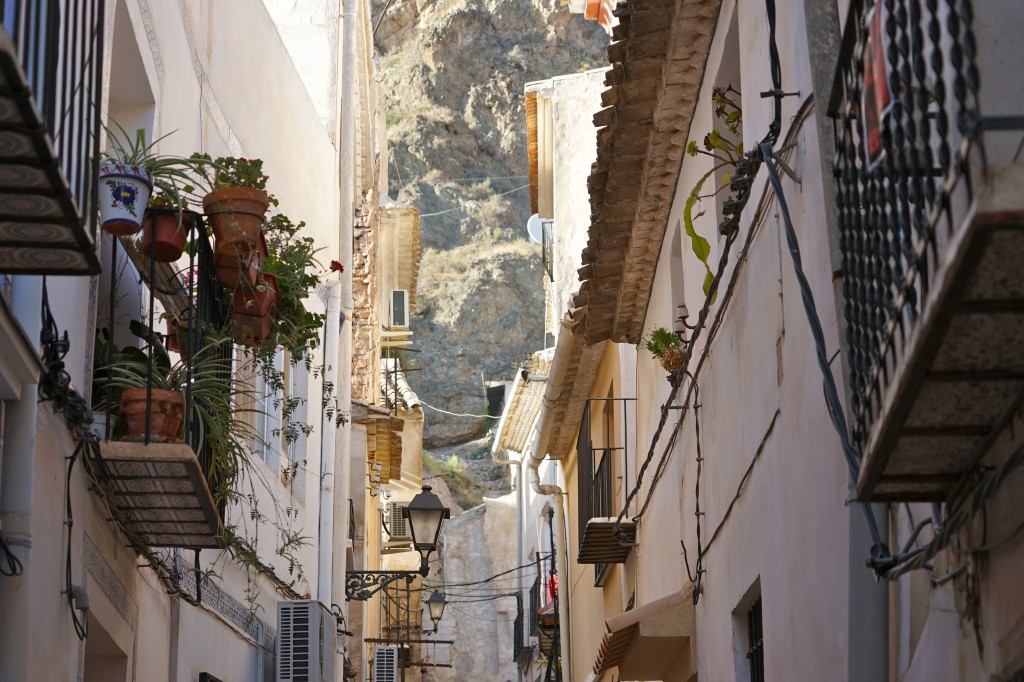
The views are stunning. Each day I climb into the mountains–skirting the line separating safety from danger (think: Margaret Bourke-White). It is off the path that one finds the unexpected magic, the thrill of the unknown and the adrenaline of living literally on the edge, stumbling down the craggy mountainside, catching one’s feet on the thorny plants, clinging to the precipice. 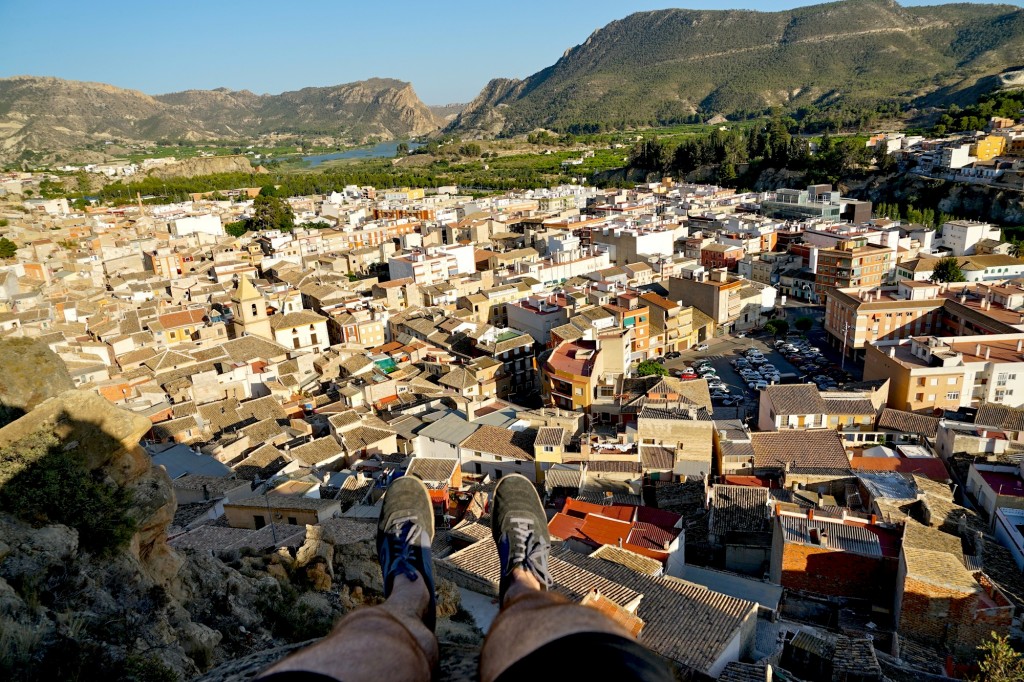
The Rio Segura has always been a valued resource here, providing water not only for the immediate area but to places as far away as the city of Alicante. The water and its irrigation systems have made this a fertile, green area, a land of both cacti and lemon orchards.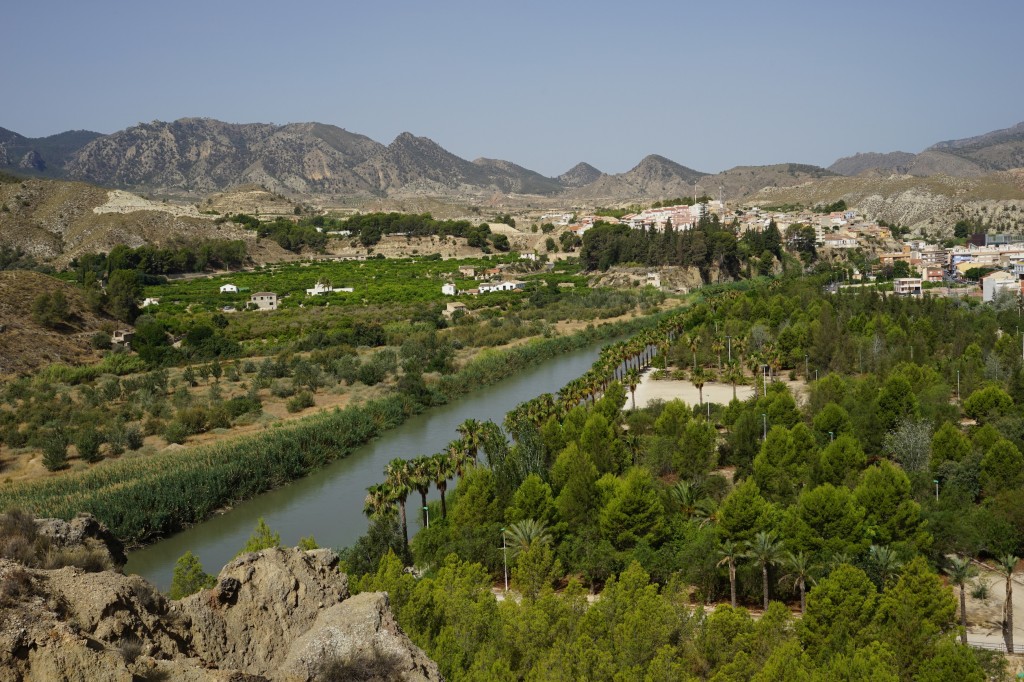
It’s also an incredible place to swim, pulled along by the constant, strong current.The river collects into this reservoir: Embalse del Azud de Ojós. Ojós is the municipality where there is a dam.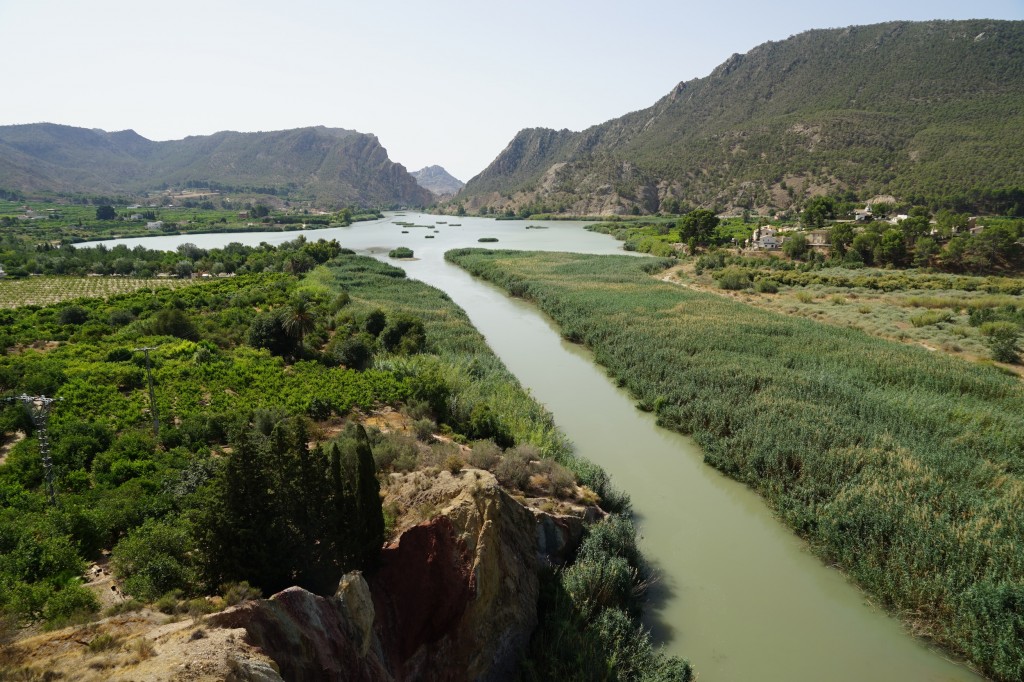
Lemon trees abound. I picked at least a dozen the other day. Giuliana, one of the artists here, made an incredible lemonade with ginger and fresh mint. And it’s terrific in vodka too!
So much public art in Blanca. This mural is by the well known Spanish street artist Gonzalo Borondo.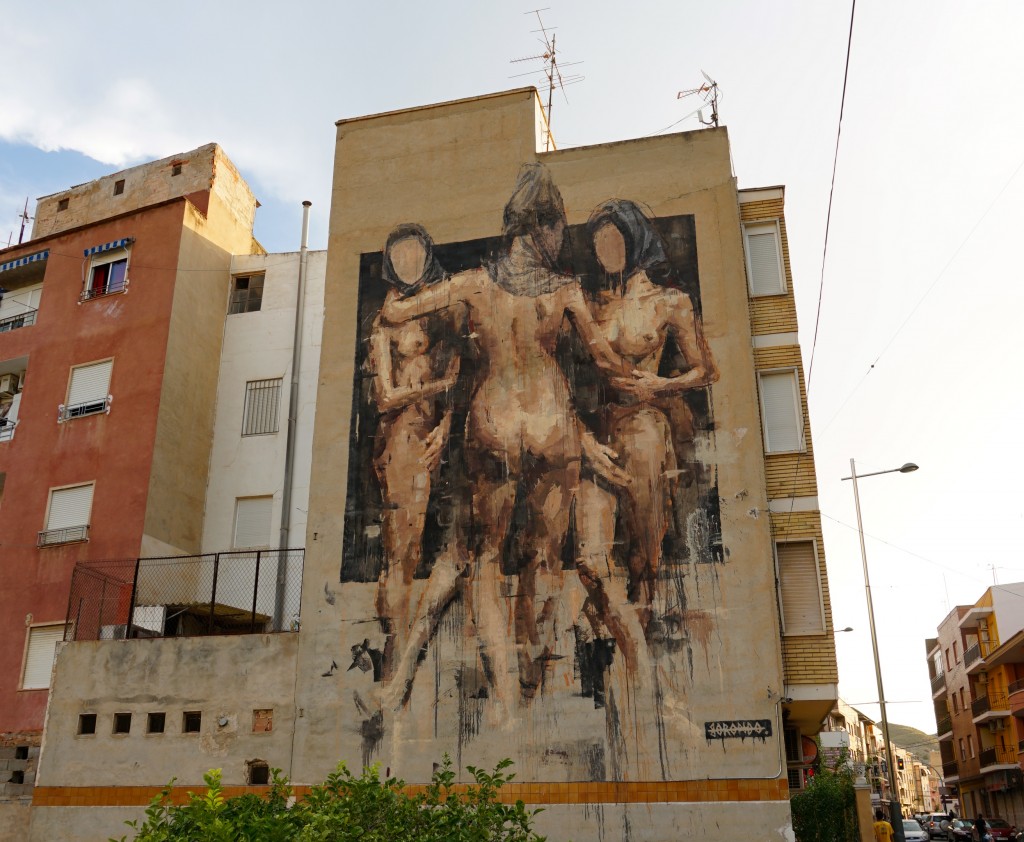
Every morning flocks of birds circle and crisscross the village center. The Castillo (castle) appears in the background. This square is called La Plaza del Ayuntamiento (Town Hall). 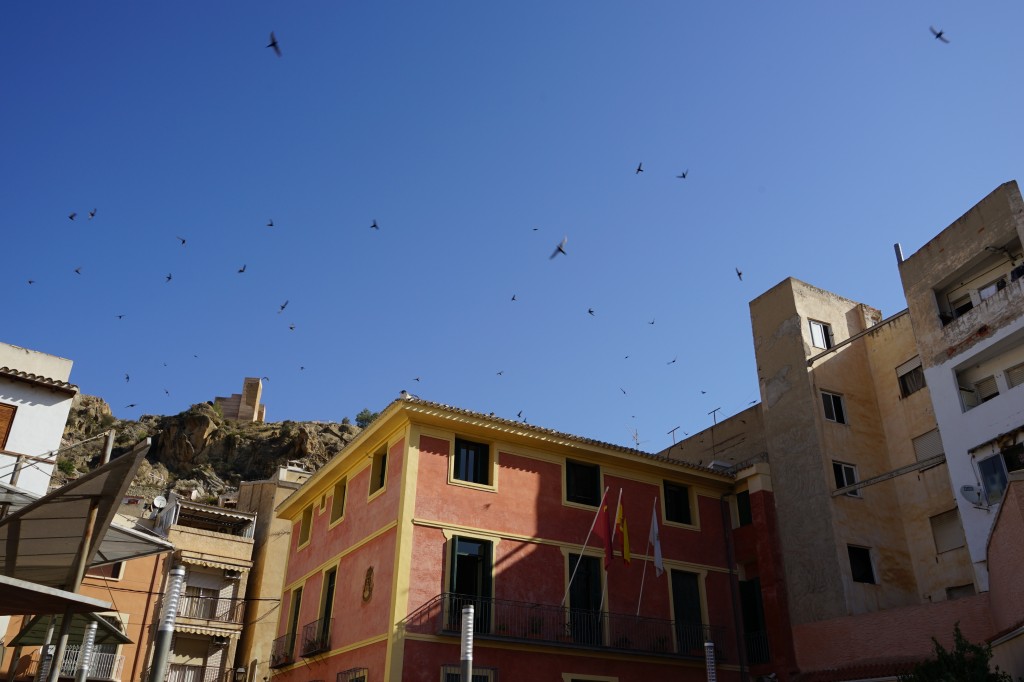
The church bells were nothing in Ménerbès compared to the composition of sounds here! Four bells on the hour, followed by the number for the hour; then everything repeats. One at fifteen past; two at the half-hour; three at forty-five past. Ave Maria plays at noon. Call to prayer and the funerals: 50 bells. The Iglesia de San Juan Evangelista was first constructed in 1508.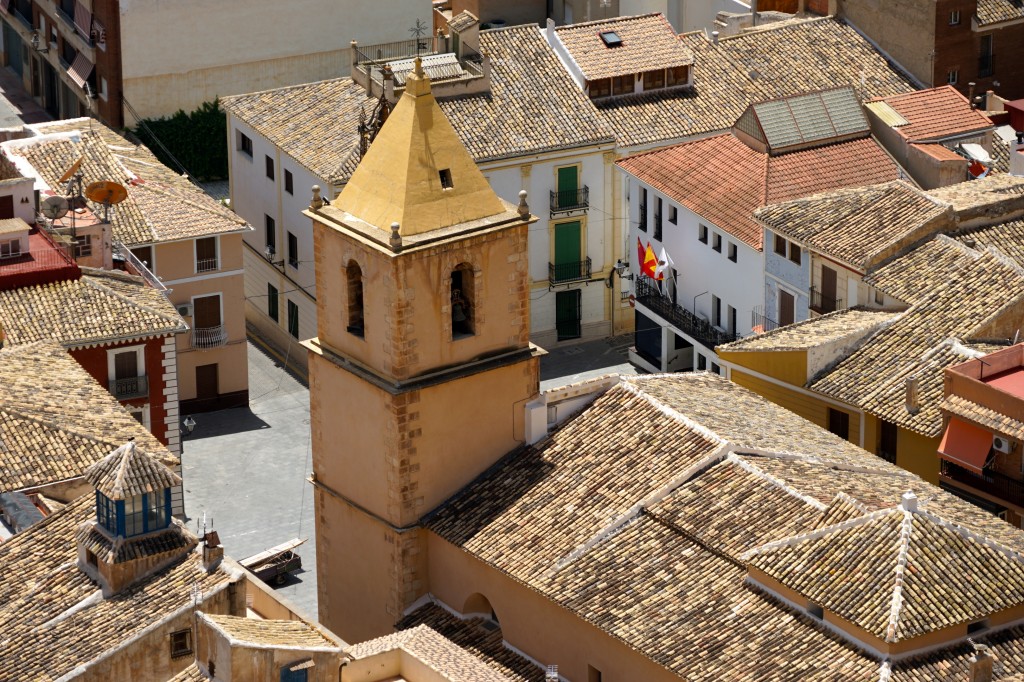
And everywhere, every time of day, the omnipresent kittens!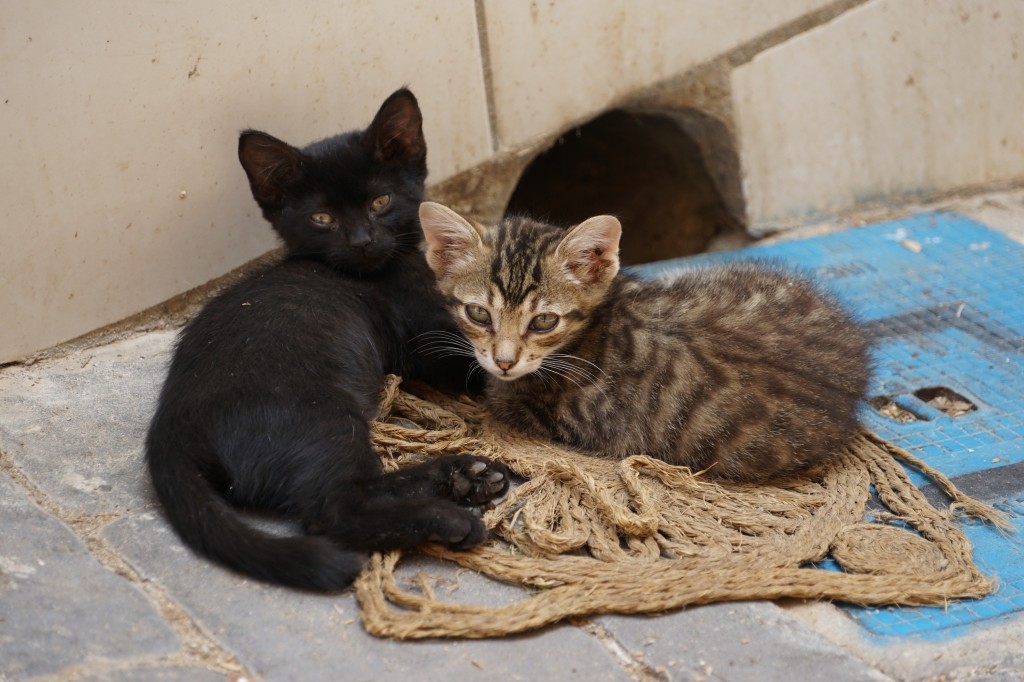
Alongside the River Segura is a traditional Arabian wheel known as the wheel Miguelico Nuñez.
The castle was initially built in the 11th-12th Centuries and was added on to later.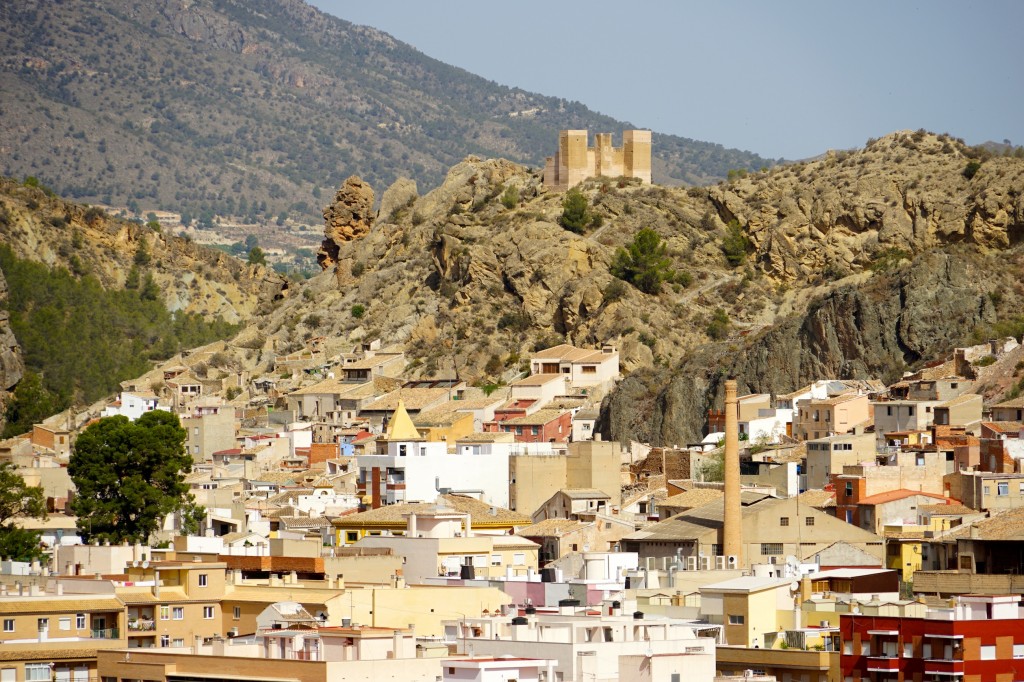
At this point in the residency, with two weeks left before leaving, time becomes even more precious. Every morning I am shooting and every evening until around 9:30pm the same. 
There is much richness here, in the landscape, the people of Blanca and the other artists (from Australia, Argentina, Chile, Germany and Spain currently). The residency is highly collaborative, a true collective community. We have had wonderful days and evenings together. I am working on three different video projects. Will look forward to sharing all!